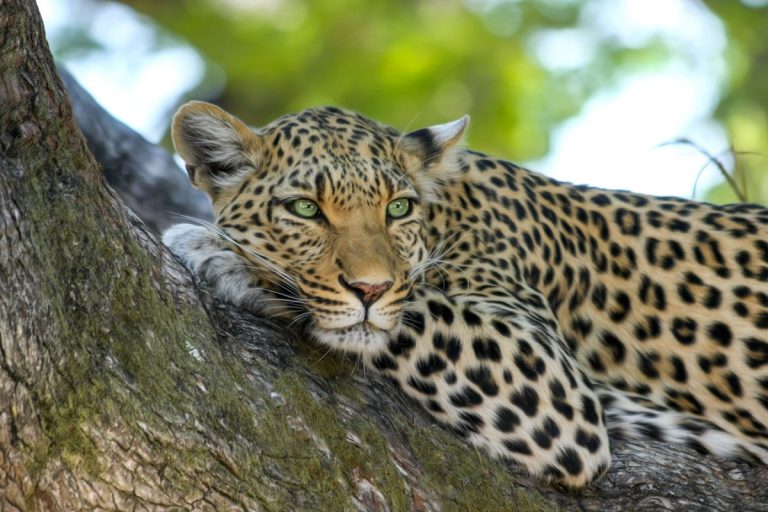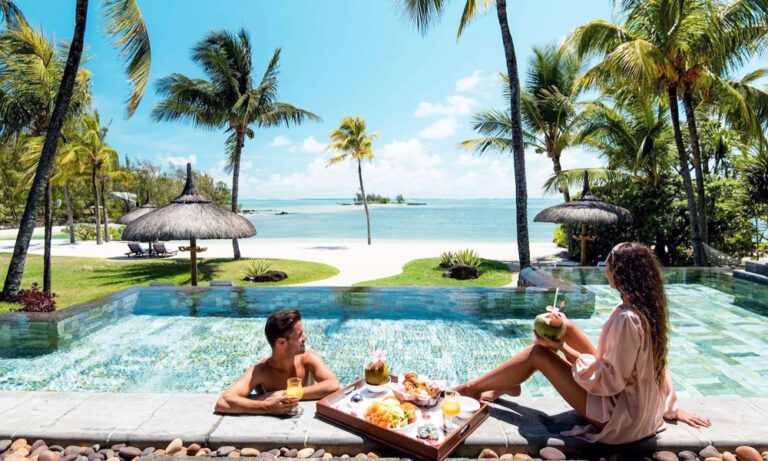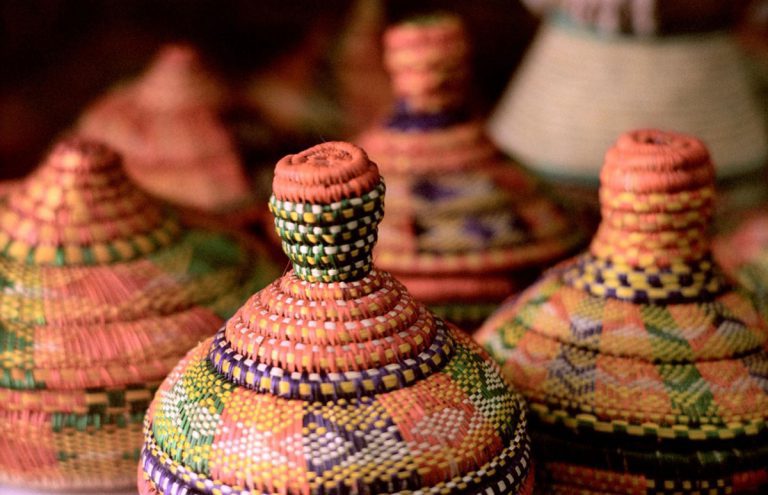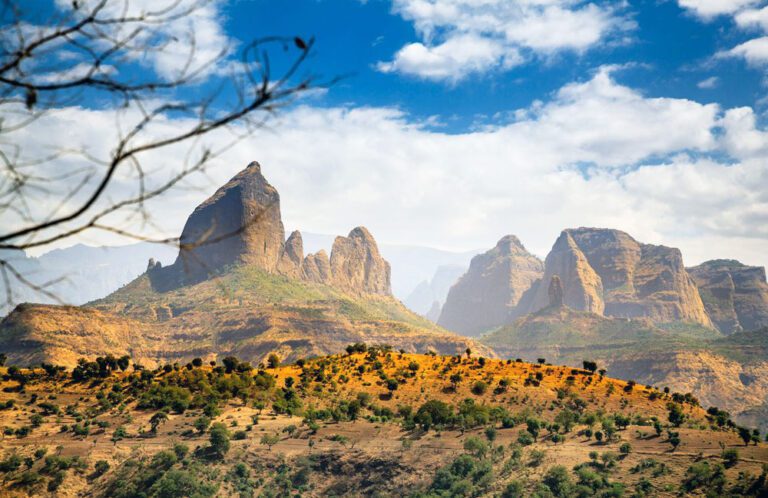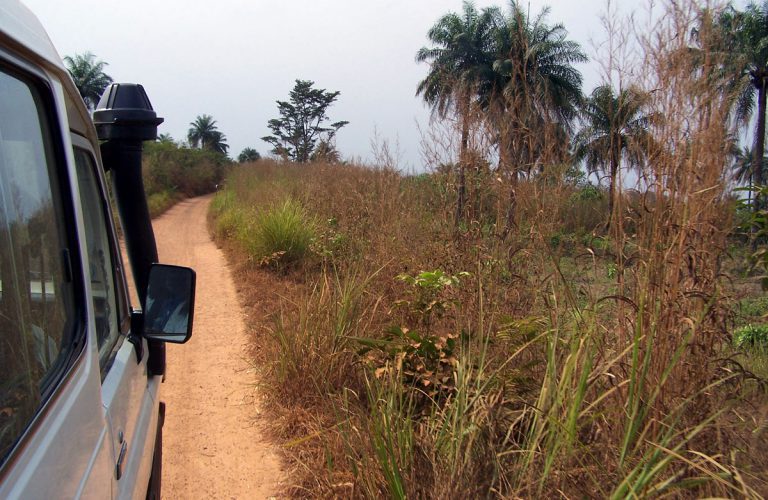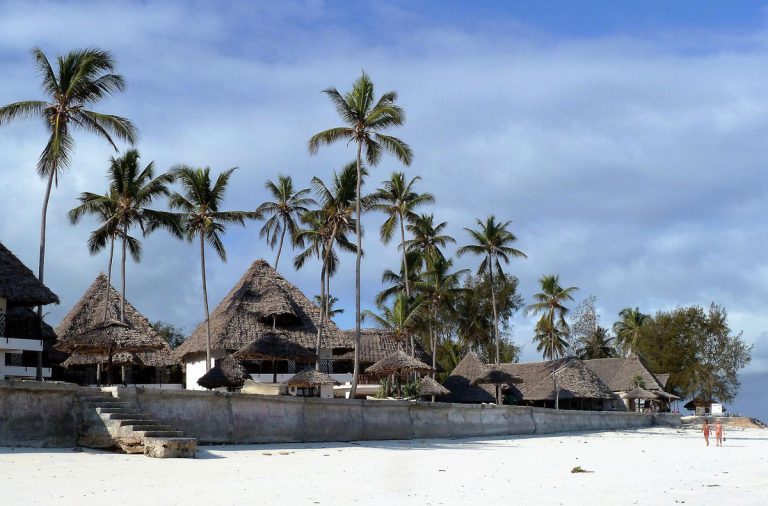The Most Beautiful Places in Africa
Last updated on May 10th, 2023 at 10:26 pm
Welcome to our journey through the most beautiful places in Africa, the “Mother Continent.” Africa has traditionally been a treasure trove of beautiful landscapes, incredible natural beauty, and unequaled beauty due to its vast cultural diversity.
In this blog post, we explore stunning African destinations. We’ll focus on places like South Africa’s Blyde River Canyon. The canyon stretches 16 miles (26 km) in the Mpumalanga region. It’s among the world’s most picturesque canyons. From lush rainforests to magnificent waterfalls, Africa’s diverse landscapes and natural marvels await your discovery.
Join us as we uncover the continent’s hidden gems and share our passion for the unparalleled beauty that Africa has to offer.
East & Central Africa
1. Lake Naivasha, Kenya
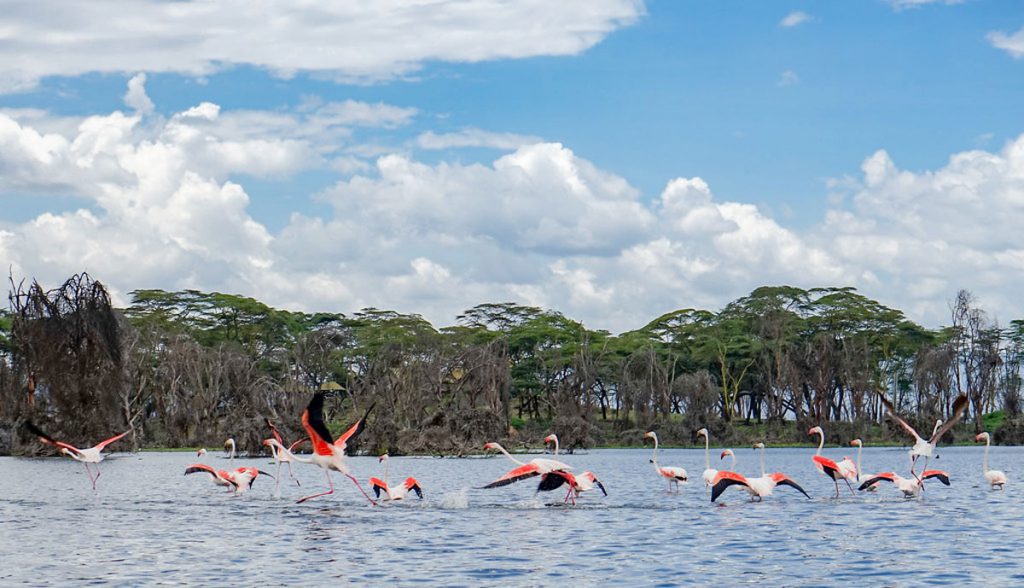
Lake Naivasha is a freshwater lake located northwest of Nairobi, Kenya. It is part of the Great Rift Valley.
It is a popular destination for tourists visiting Kenya due to its unique and diverse attractions. A big reason people like visiting Lake Naivasha is to see lots of different kinds of birds. There are more than 400 different types of birds you can spot there. Hippos, giraffes, and buffalos are among the wildlife that lives in the area.
Popular activities at Lake Naivasha include a boat ride on the lake, a safari to see the wildlife, or a hot air balloon ride to see the amazing views from above.
Another unique attraction of Lake Naivasha is the opportunity to visit Hell’s Gate National Park, where visitors can hike, bike, or rock climb amidst stunning scenery, including towering cliffs, geothermal vents, and hot springs.
2. Volcanoes National Park, Rwanda
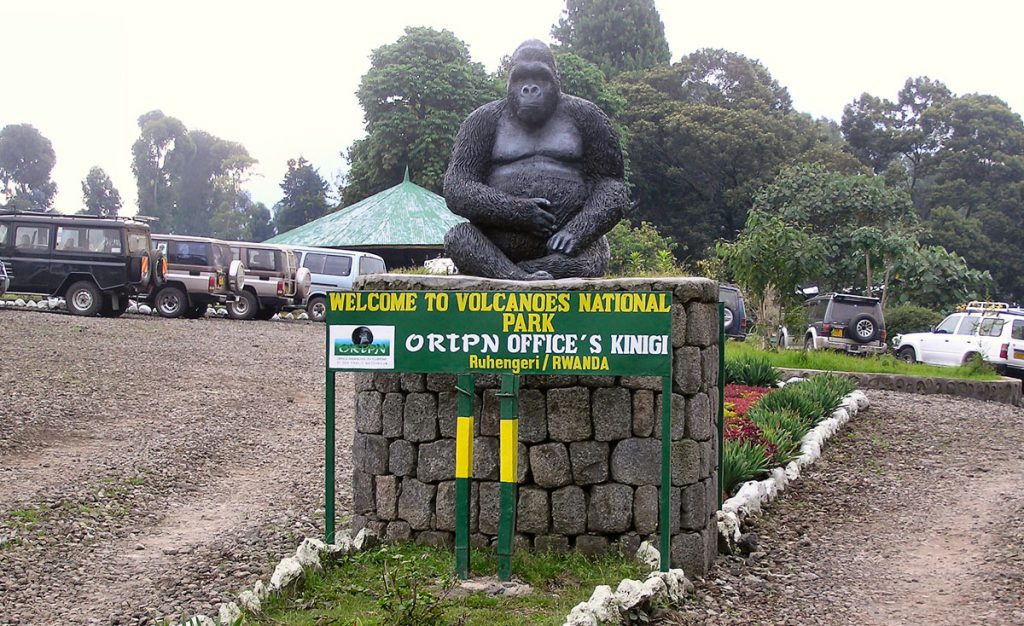
Volcanoes National Park is located northwest of Rwanda. It is home to 340 of the 780 mountain gorillas that are still in the wild today.
3. Zanzibar, Tanzania
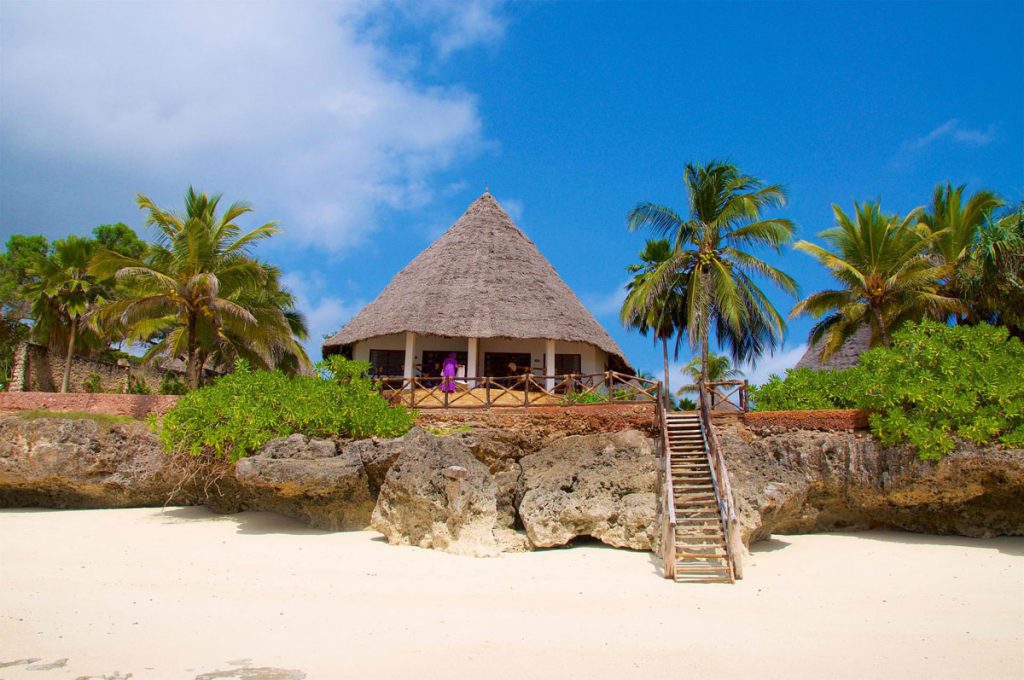
The Zanzibar archipelago is situated off the coast of East Africa. Stone Town, a historic commerce hub with Swahili and Islamic influences, is located on Unguja, the main island of Zanzibar.
4. Simien Mountains National Park, Ethiopia
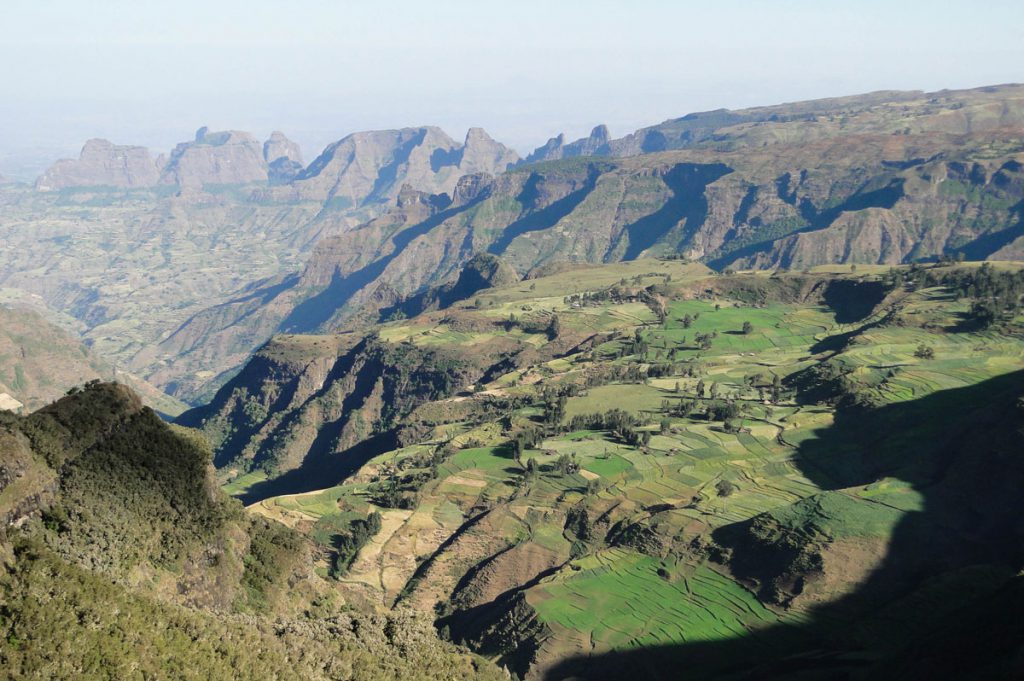
Located in northern Ethiopia lies Simien Mountains National Park. Escarpments, steep valleys, and a high plateau make up its rough landscape, which is home to the endangered Walia ibex and Gelada baboons.
5. Serengeti National Park, Tanzania
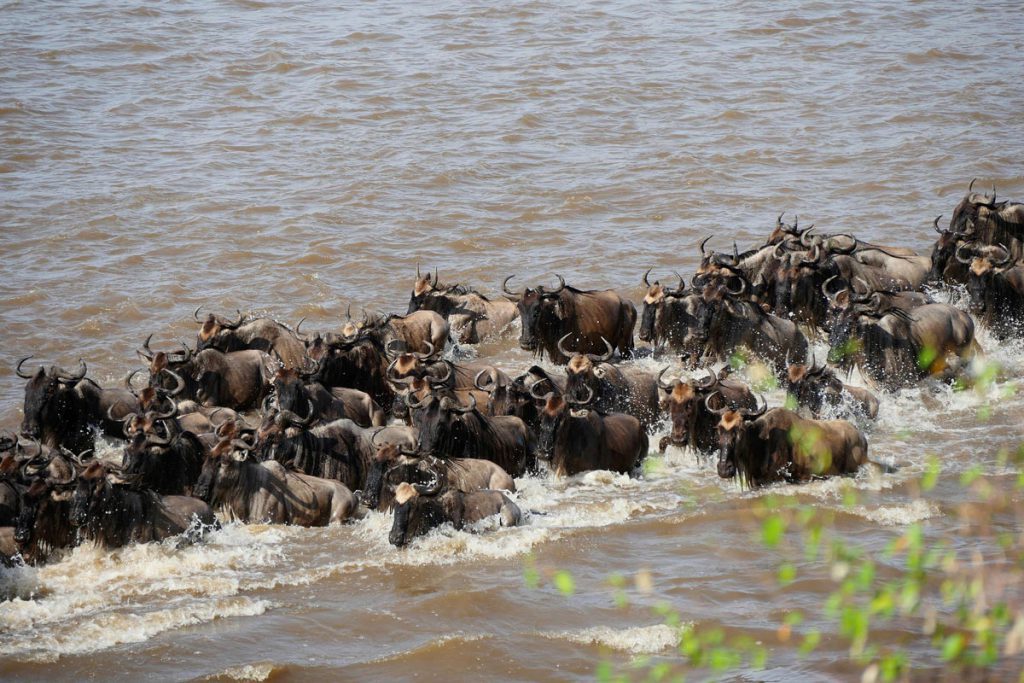
Africa’s Serengeti environment spans northern Tanzania.
6. Church of Saint George, Ethiopia
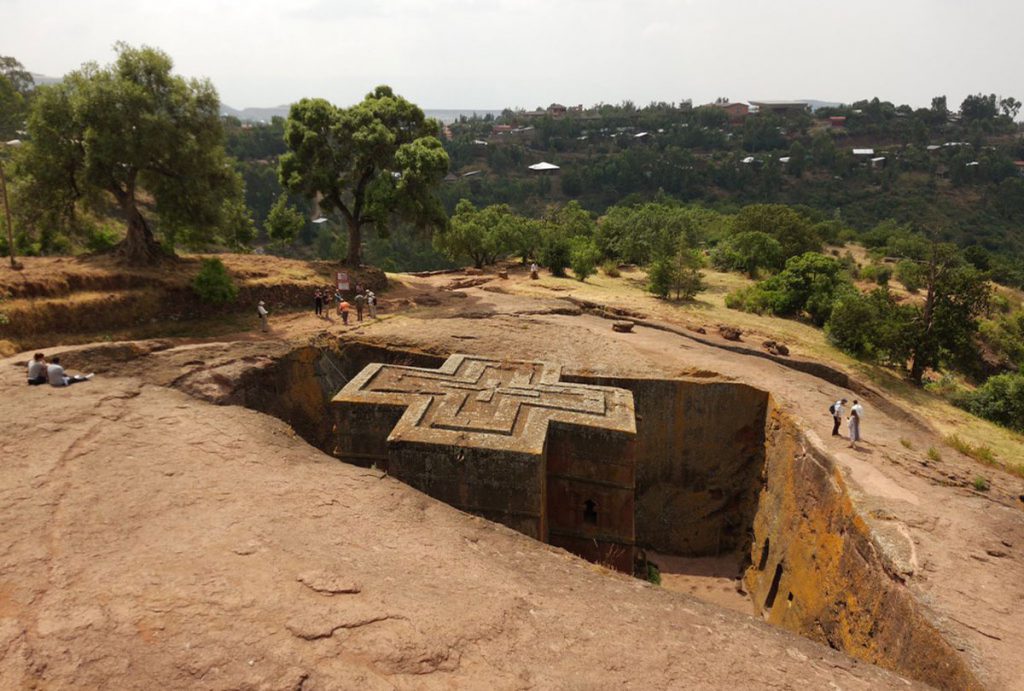
One of the eleven rock-hewn monolithic churches in Lalibela, a town in Ethiopia’s Amhara Region, is the Church of Saint George.
7. Nabiyotum Crater, Kenya
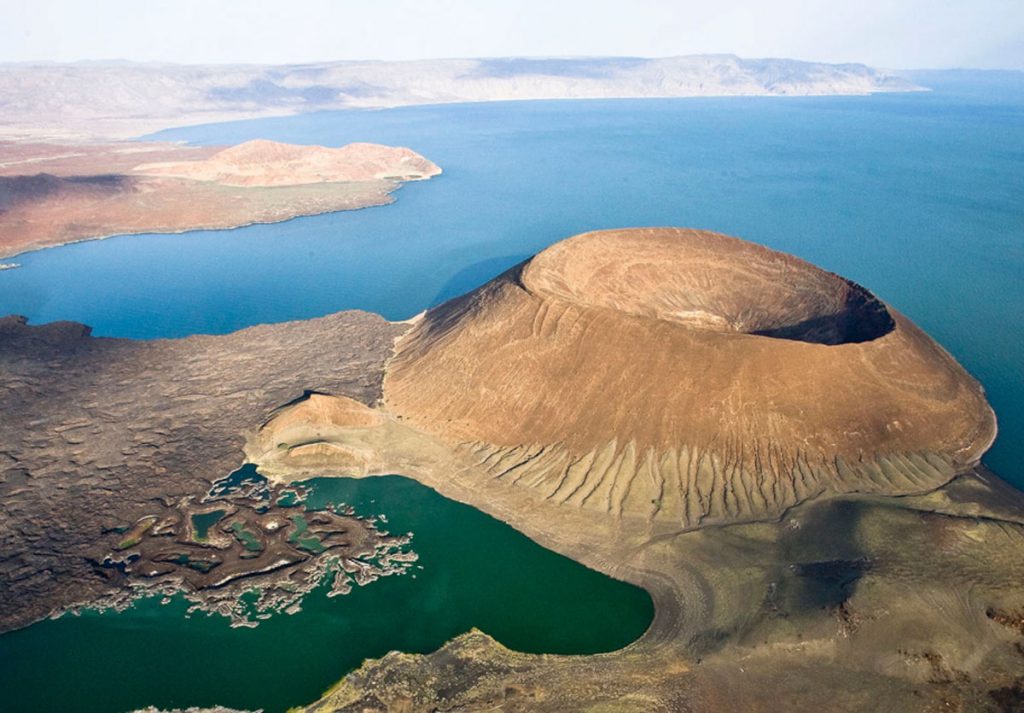
In Lake Turkana, there lies a magnificent geological wonder called the Nabuyatom Crater.
8. Bwindi Forest, Uganda
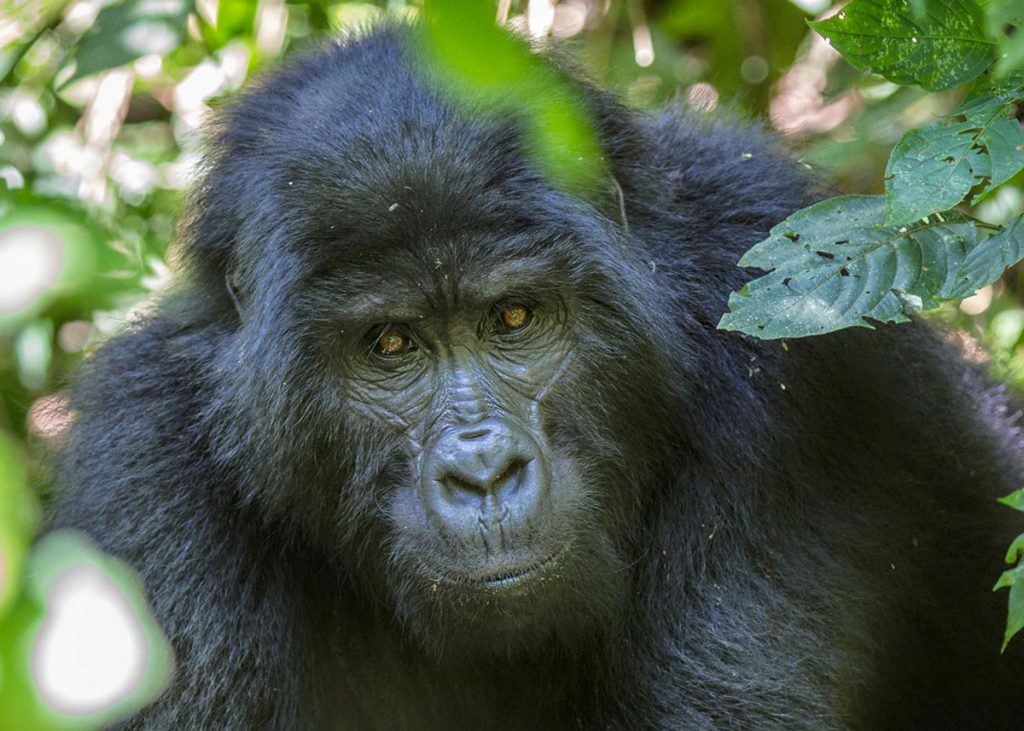
In southwest Uganda, there is a sizable prehistoric forest called the Bwindi Impenetrable Forest.
9. Mt. Kilimanjaro, Tanzania
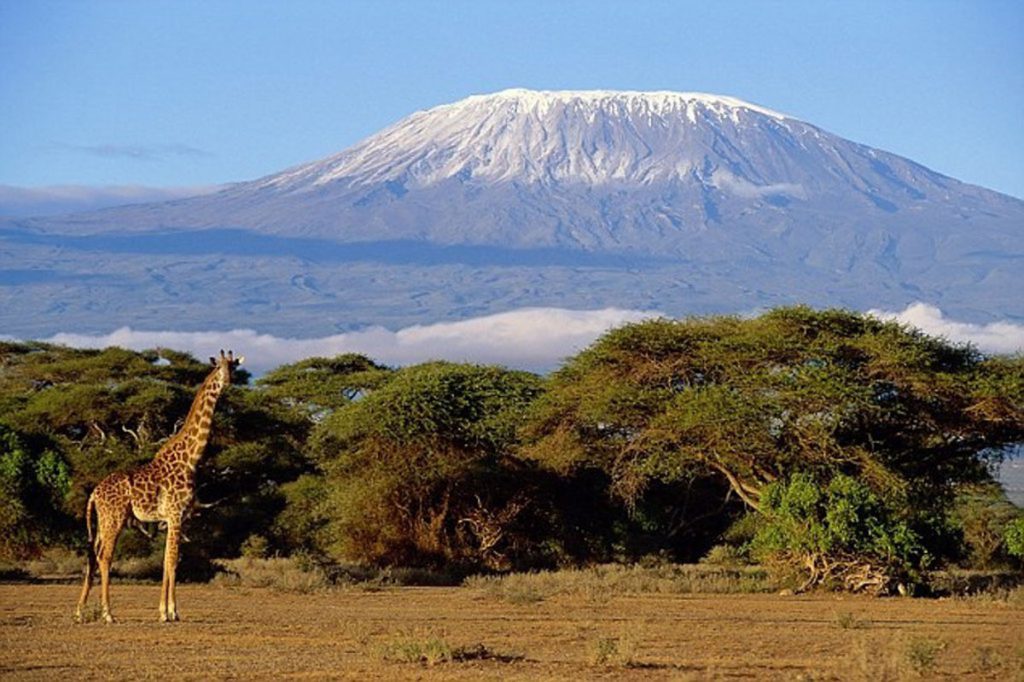
Tanzania’s Mount Kilimanjaro is a dormant volcano. Kibo, Mawenzi, and Shira are the three volcanic cones found there. With a height of 5,895 meters above sea level and roughly 4,900 meters above its plateau base, it is both the highest peak in Africa and the tallest free-standing mountain in the world.
10. Sudd, South Sudan
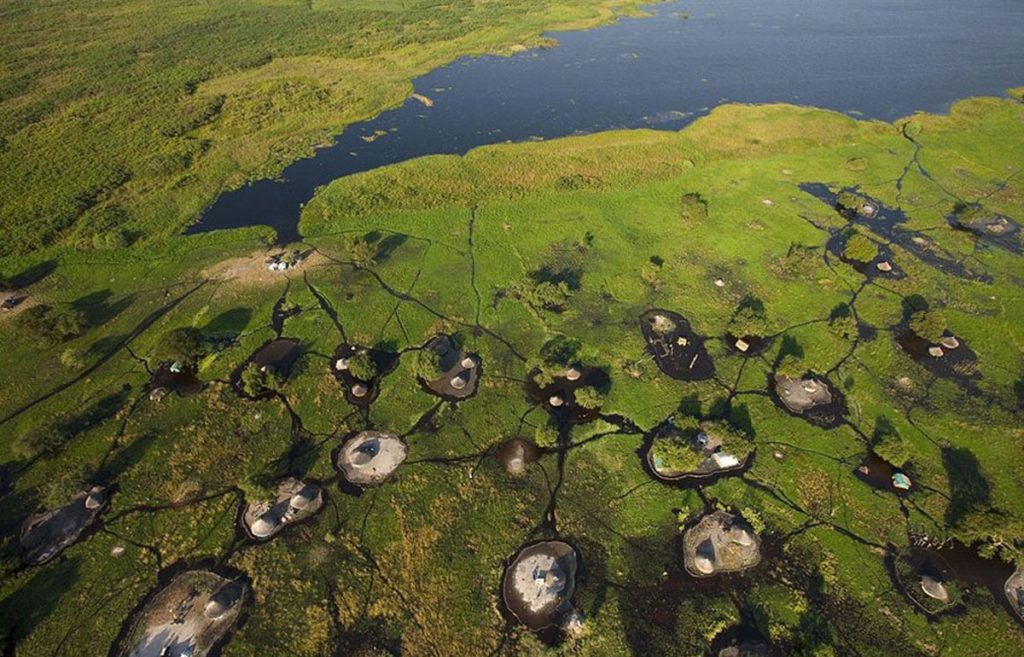
The Sudd in South Sudan is of the largest tropical wetlands in the world and the largest wetland in Africa.
11. Ngorongoro Crater, Tanzania
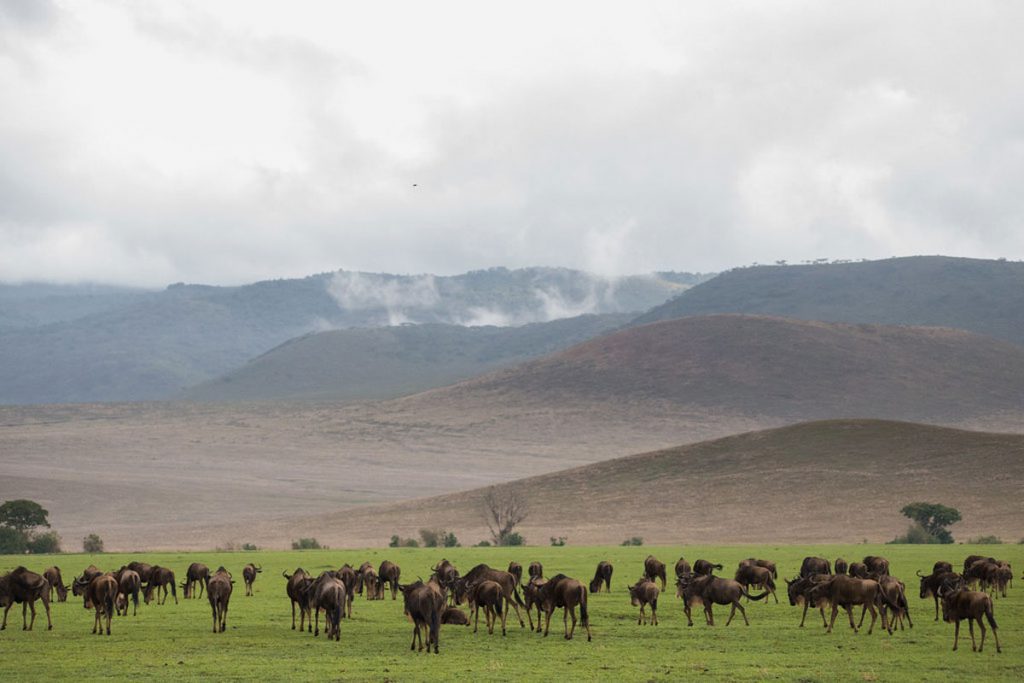
The world’s largest intact caldera is the Ngorongoro Crater in northern Tanzania, which was originally a massive volcano.
Indian Ocean Islands
1. Avenue of the Baobabs, Madagascar
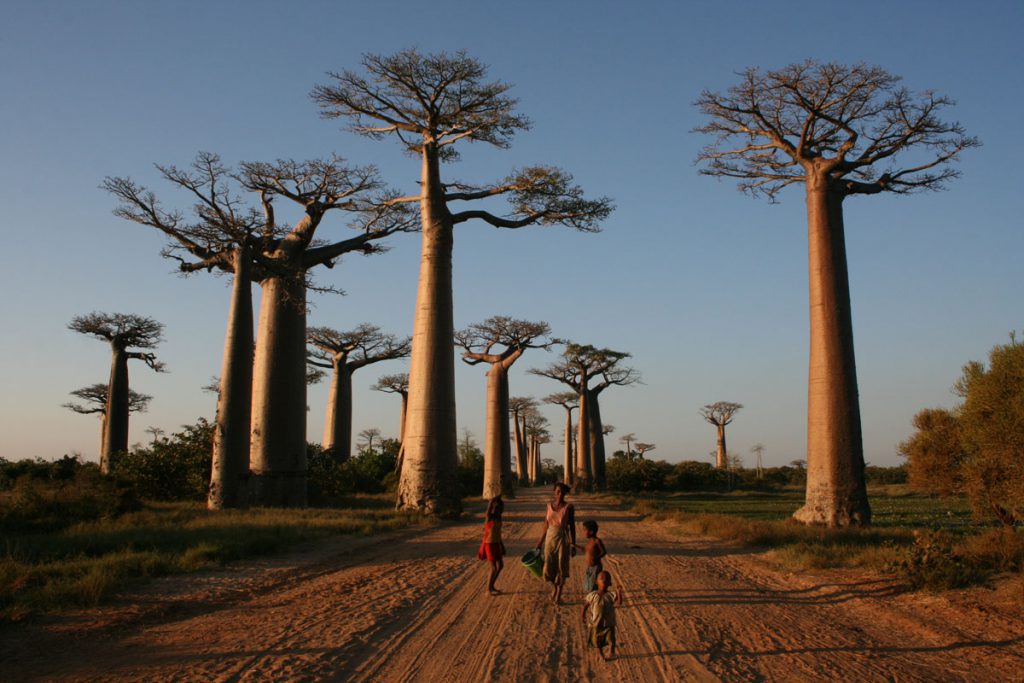
The Grandidier’s baobab grove often referred to as the Avenue of the Baobabs or the Alley of the Baobabs, is located in the Menabe region of western Madagascar.
2. Praslin, Seychelles
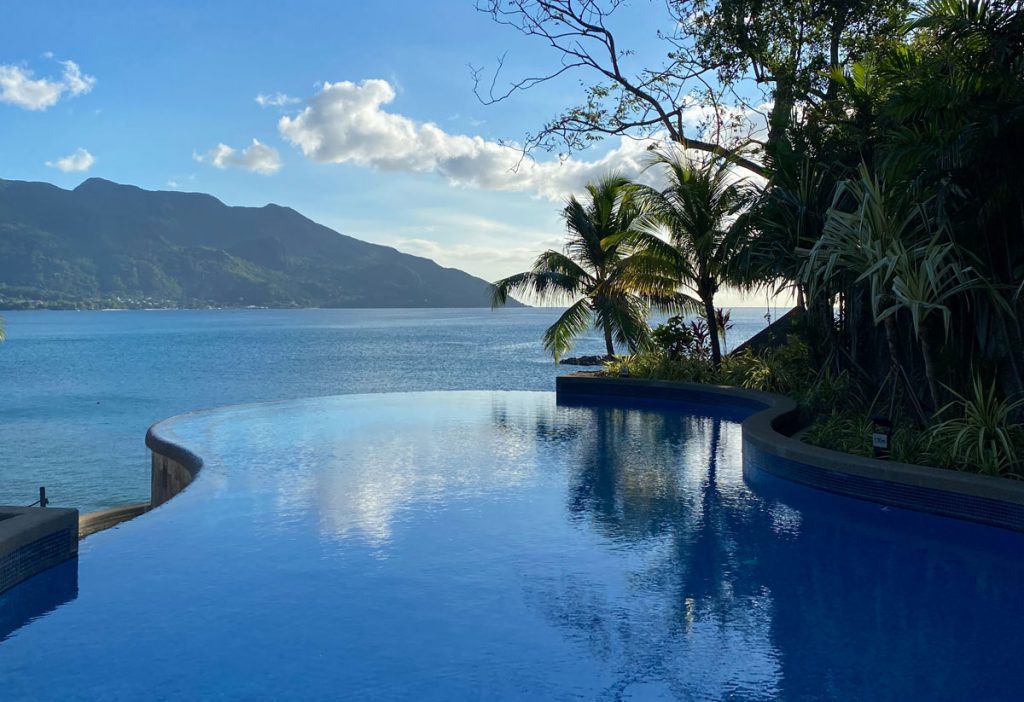
Praslin is an island in Seychelles, in the Indian Ocean.
3. Piton de la Fournaise, Réunion
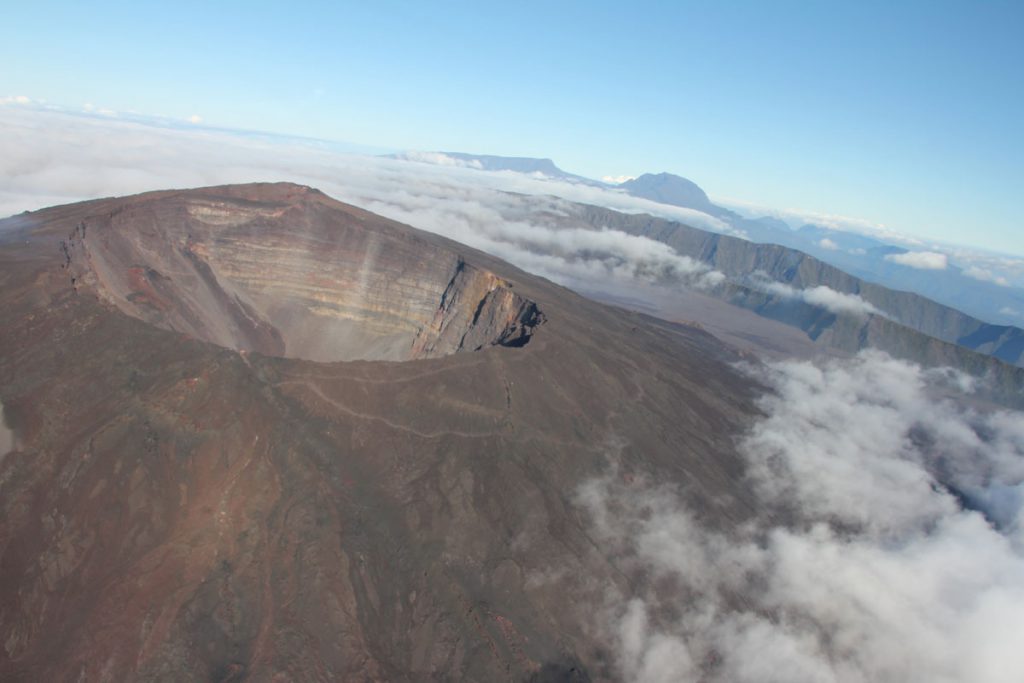
On the eastern side of the Indian Ocean island of Réunion, there is a shield volcano called Piton de la Fournaise. With an average eruption every nine months, it is currently one of the most active volcanoes in the world. It is situated close to Madagascar on Reunion Island, one of France’s overseas possessions in the Indian Ocean.
4. Tsingy de Bemaraha National Park, Madagascar
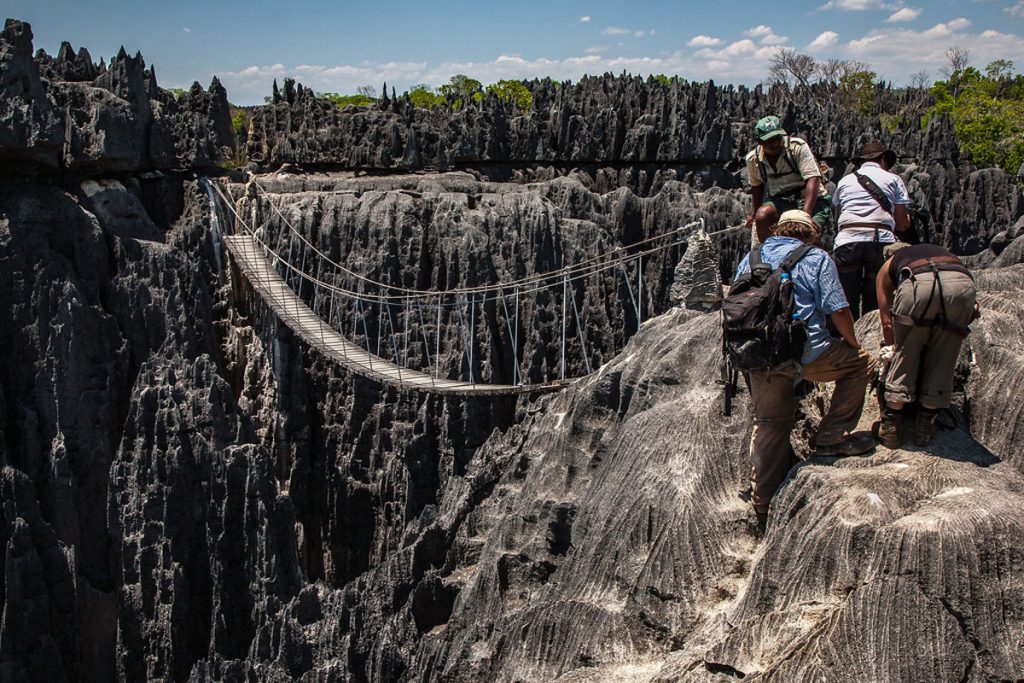
In the northwest of Madagascar, in the Melaky Region, is a national park called Tsingy de Bemaraha.
5. Le Morne Brabant, Mauritius
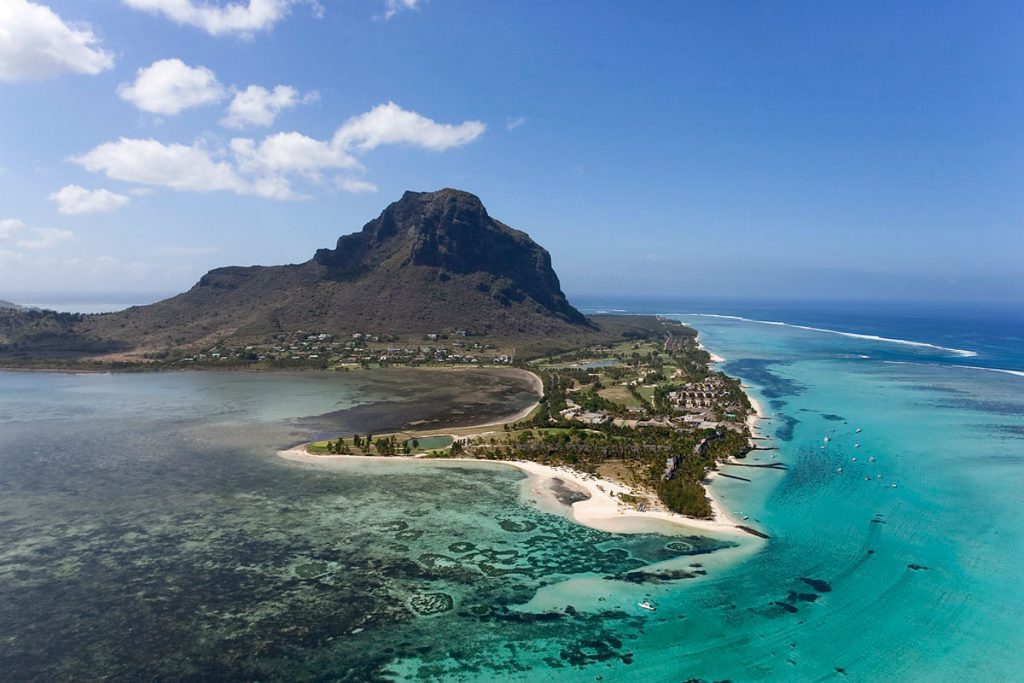
On the western side of the island of Mauritius in the Indian Ocean, there is a peninsula called Le Morne Brabant.
North Africa
1. Abu Simbel, Egypt

The historical landmark Abu Simbel, which consists of two gigantic rock-cut temples, is located in the town of Abu Simbel, Aswan Governorate, Upper Egypt.
2. Giza, Egypt

The Egyptian city of Giza is located close to Cairo on the west bank of the Nile. Among the iconic Egyptian buildings that may be found on the Giza Plateau are three enormous pyramids built as royal mausoleums in the 26th century BC.
3. Chefchaouen, Morocco
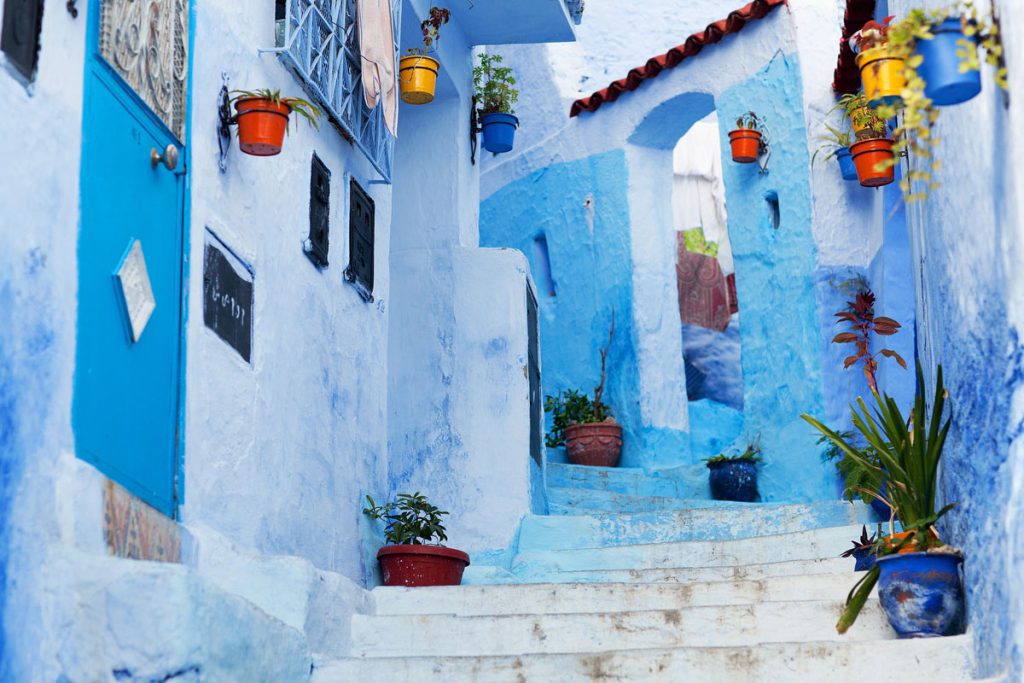
The city of Chefchaouen, sometimes known as Chaouen, is located in the Rif Mountains, northwest of Morocco.
4. Hoggar Mountains, Algeria
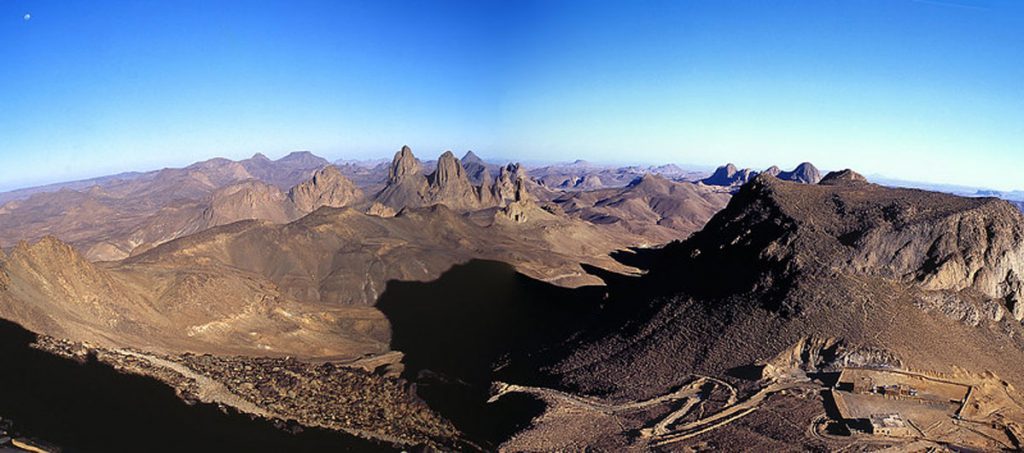
The Hoggar Mountains are a highland region in southern Algeria’s central Sahara, close to the Tropic of Cancer. The mountains cover around 550,000 km2 of land.
5. Dougga, Tunisia
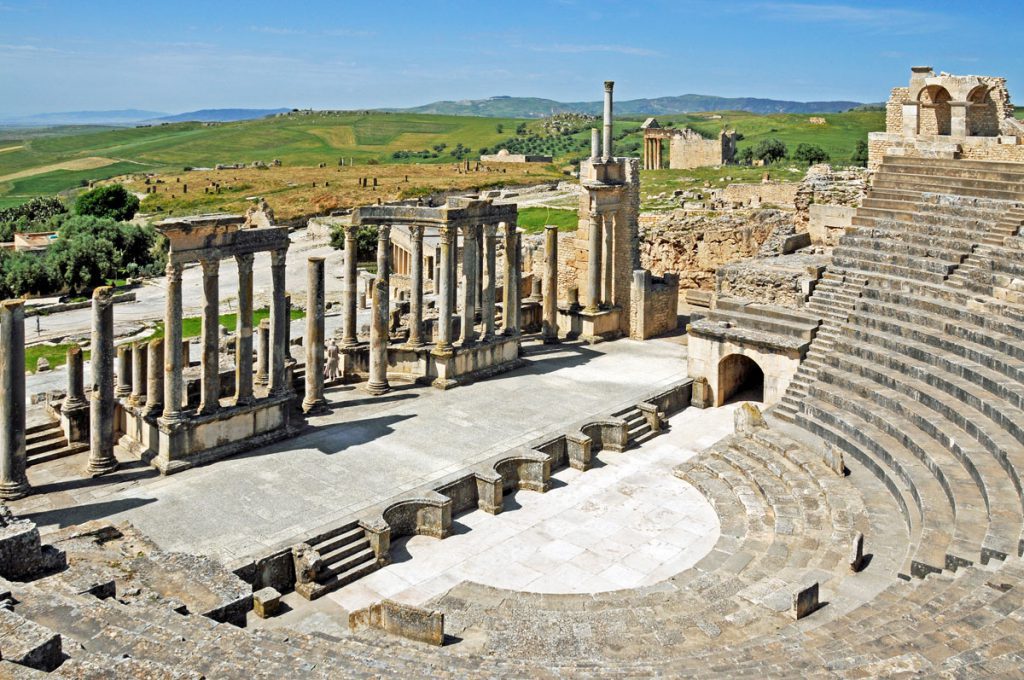
In 1997, Dougga was designated as a World Heritage Site by UNESCO, which deemed it to be “the best-preserved Roman minor town in North Africa.”
6. Fez, Morocco
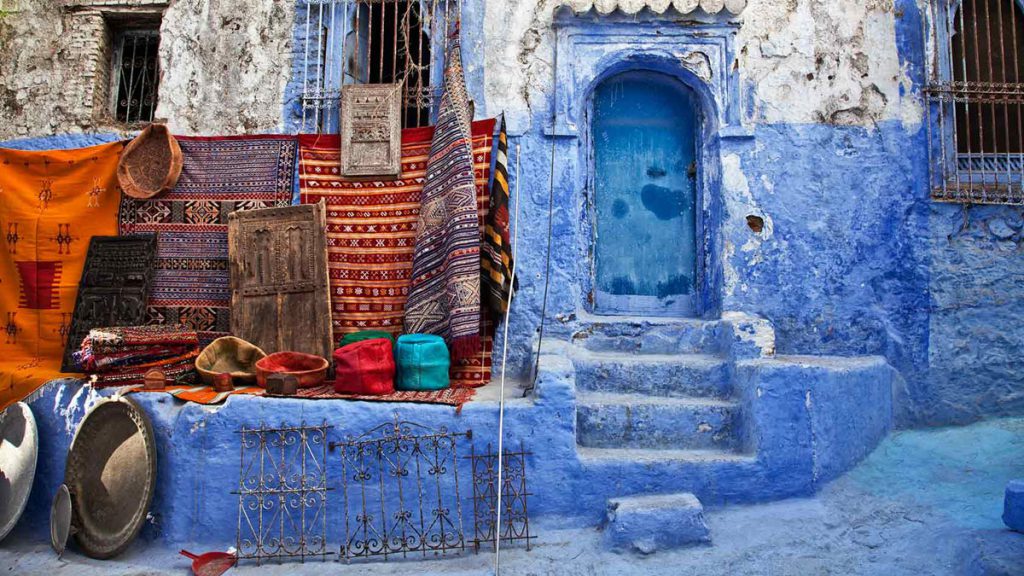
The city of Fes in northern Morocco is frequently referred to as the nation’s cultural center. It is most renowned for its walled Fes El Bali Medina, which features colorful souks, medieval Marinid architecture, and an antique ambiance.
7. Aswan, Egypt
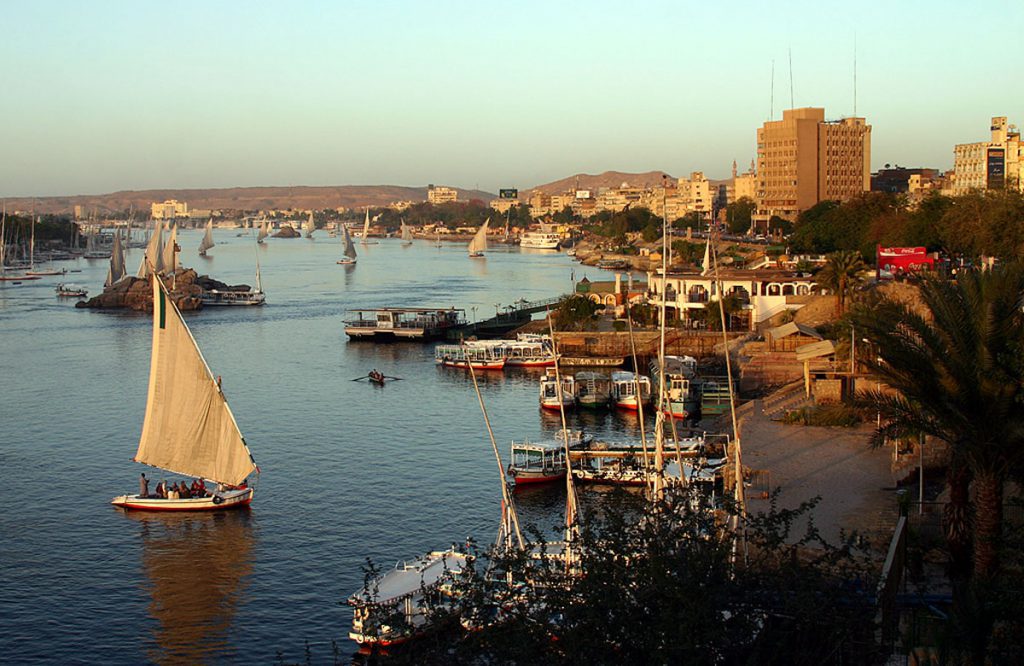
Since ancient times, the Nile River city of Aswan has served as the strategic and commercial hub of southern Egypt.
West Africa
1. Rhumsiki Rock, Cameroon
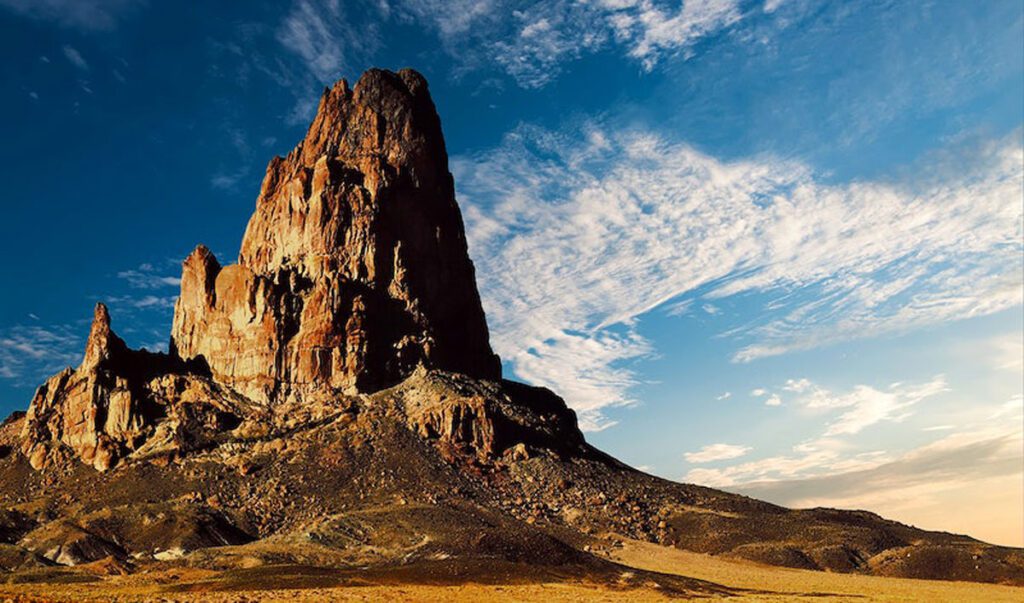
Rhumsiki is located in the Mandara Mountains, 34 kilometers from Mokolo, and just a few miles from the Nigerian border with Adamawa State.
2. Bandiagara, Mali
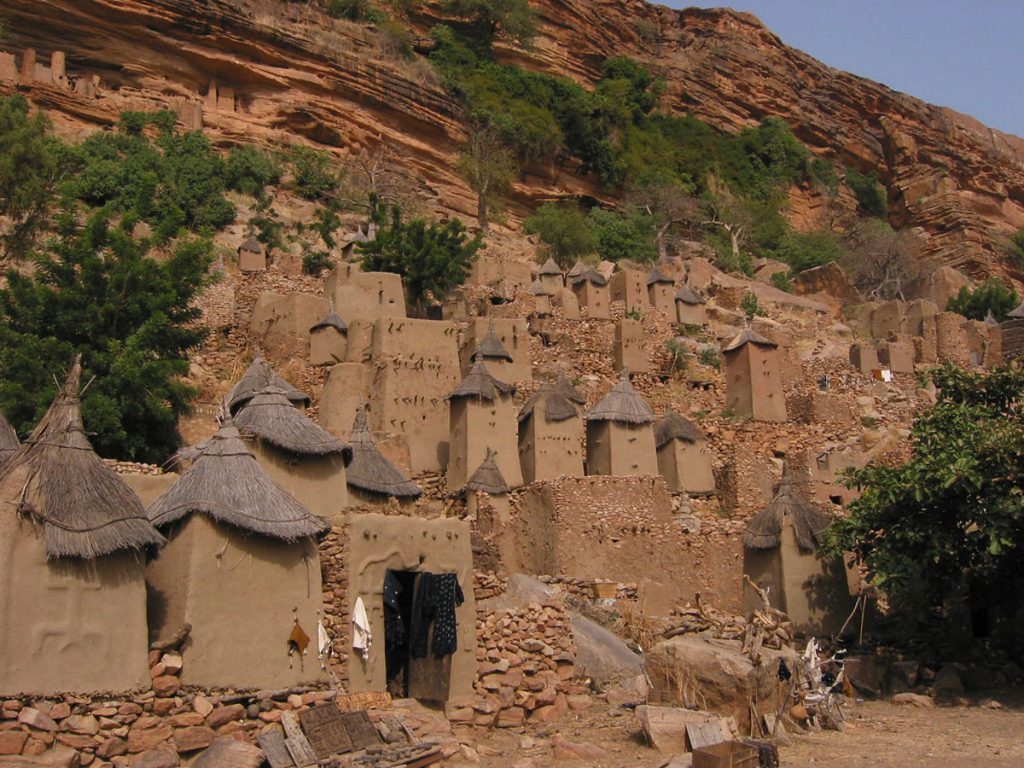
Bandiagara is a small town and urban community in the Mali region of Mopti. The name, which refers to the communal bowl in which meals are served, loosely translates to “big eating bowl.”
3. Ganvie, Benin
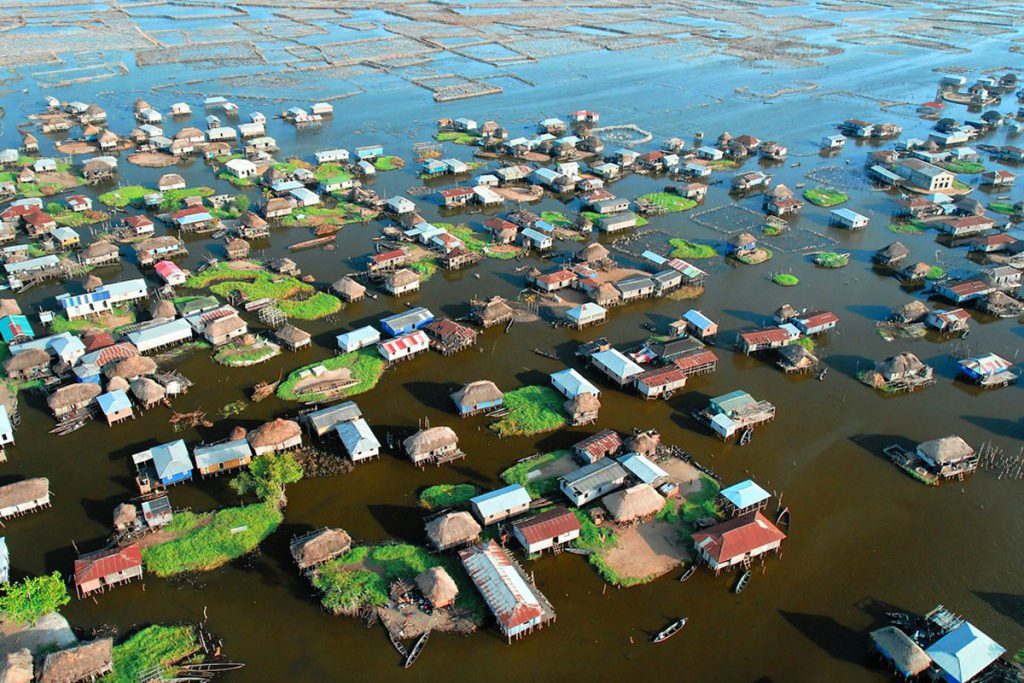
Ganvie is a lake village on Lake Nokoué in the nation of Benin. With a population of over 20,000, it is the largest lake village in Africa and is quite popular with travelers.
4. Lake Retba, Senegal
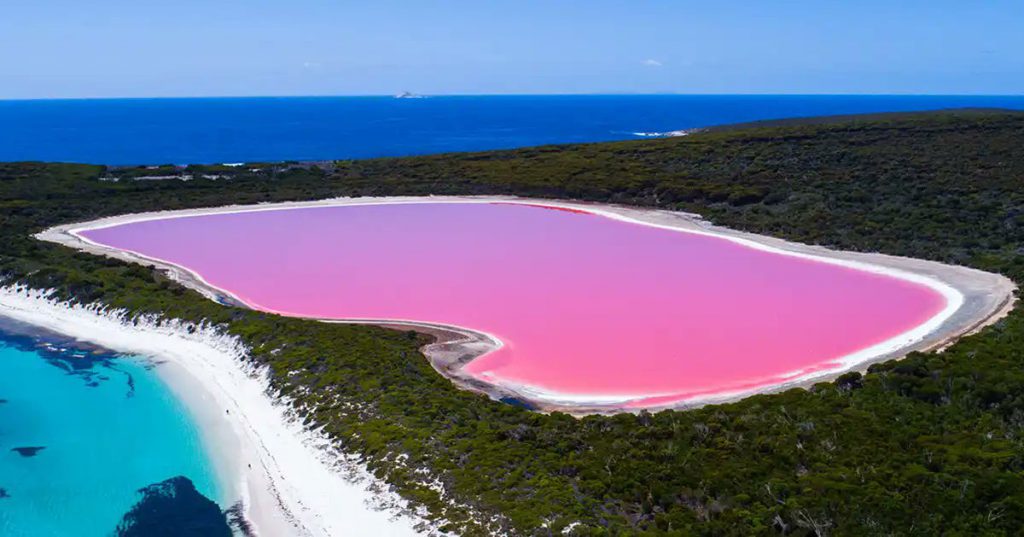
North of Senegal’s Cap Vert peninsula, around 30 kilometers northeast of Dakar, is where Lac Rose is located. Its pink waters, which are the result of Dunaliella salina algae, gave it its name. Some portions of the water have a high salt concentration of up to 40%.
5. Yamoussoukro, Côte d’Ivoire
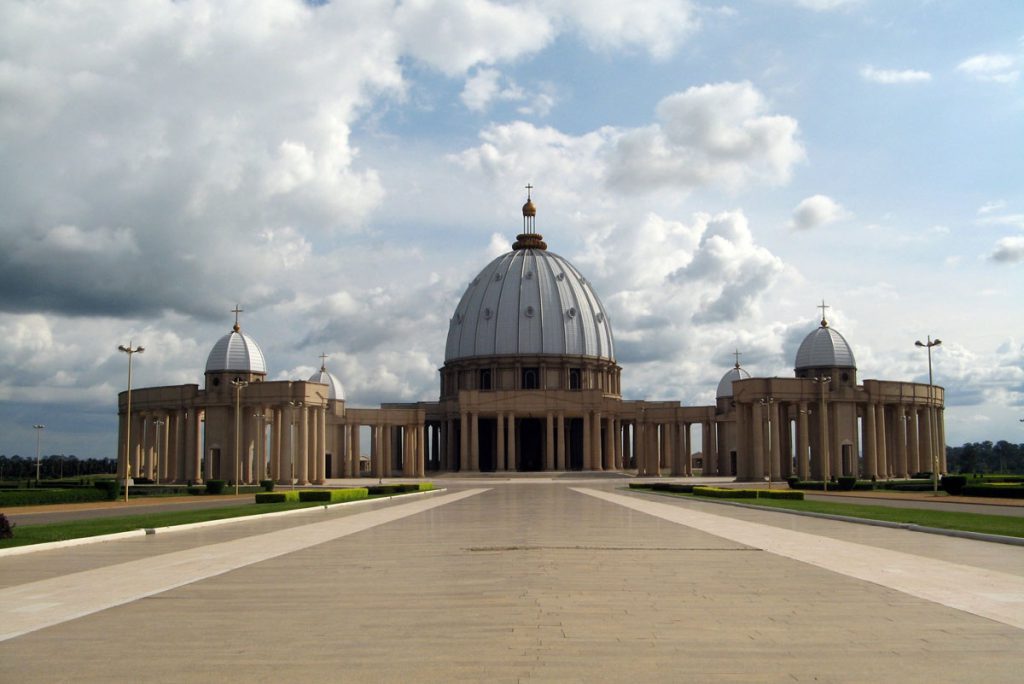
Yamoussoukro is the capital city of Côte d’Ivoire, West Africa.
6. Tiébélé, Burkina Faso
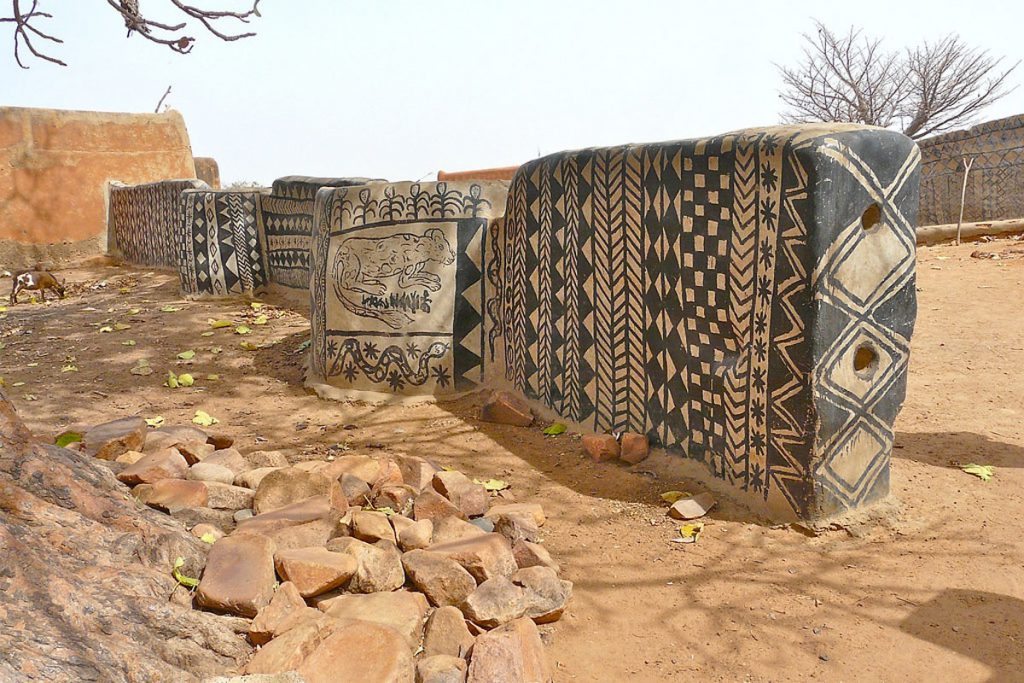
Tiébélé is a tiny, circular settlement with a population of around 1.2 hectares that is located in the southern part of Burkina Faso, a landlocked nation in west Africa, close to the border with Ghana. The Kassena people, one of the earliest ethnic groups to settle on Burkina Faso’s territory, call this place home. The Kassena are committed to agriculture and are well-known for growing beans, sesame, corn, and peanuts.
Amazing traditional Gourounsi architecture and ornately adorned walls can be found in Tiébélé.
The women of the hamlet are the only ones permitted to make these amazing works of art in the open on the dwellings, which are all made of mud and earth.
Every house is constructed from mud, earth, straw, and wood and is tastefully adorned in the Gourounsi manner. The hand-painted murals depict items from daily life or allude to religious symbolism.
The dwellings in the village are built in a circular pattern, with vertical walls that are 30 cm thick to provide a strong defense against intruders and shelter from the sweltering heat. Only a little aperture to permit light in serves as the only windowless surface.
7. Great Mosque of Djenné, Mali
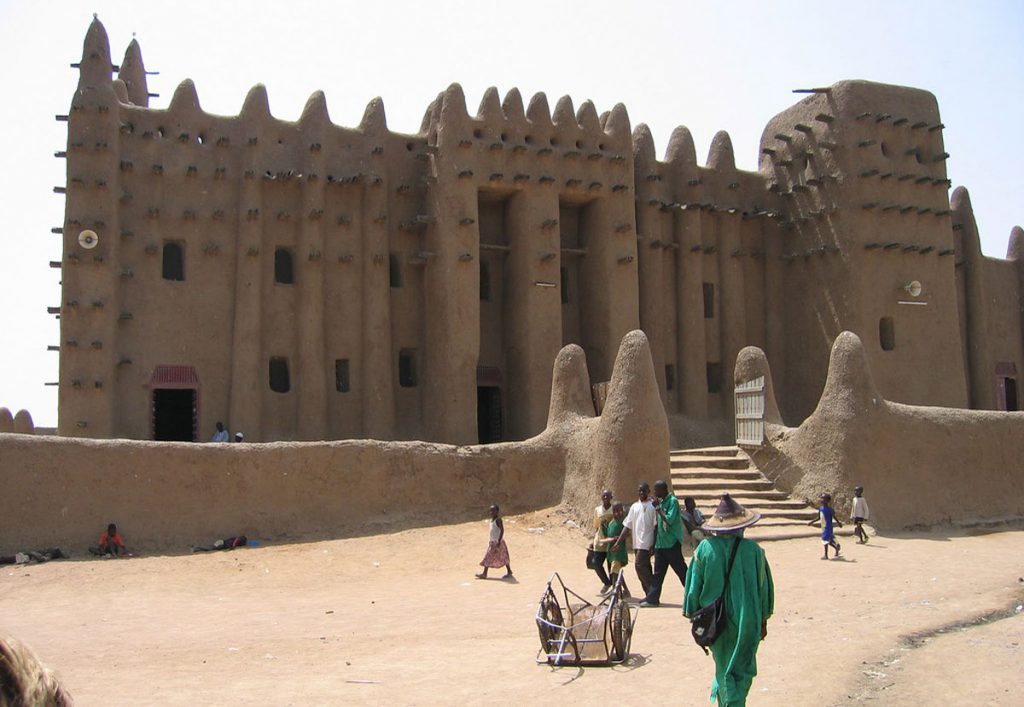
A massive brick or adobe structure in the Sudano-Sahelian architectural style, the Great Mosque of Djenné. On the Bani River’s flood plain in the Mali city of Djenné, the mosque can be found.
8. Kakum National Park, Ghana
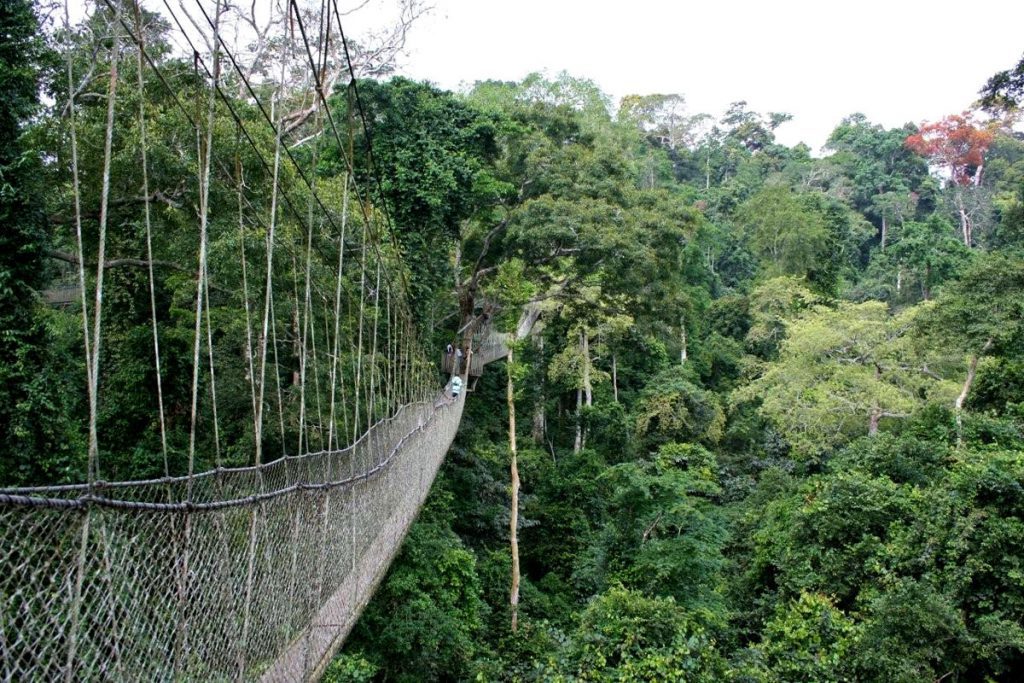
Ghana’s Central Region, close to the coast, is where you’ll find Kakum National Park.
9. Abuja National Mosque, Nigeria
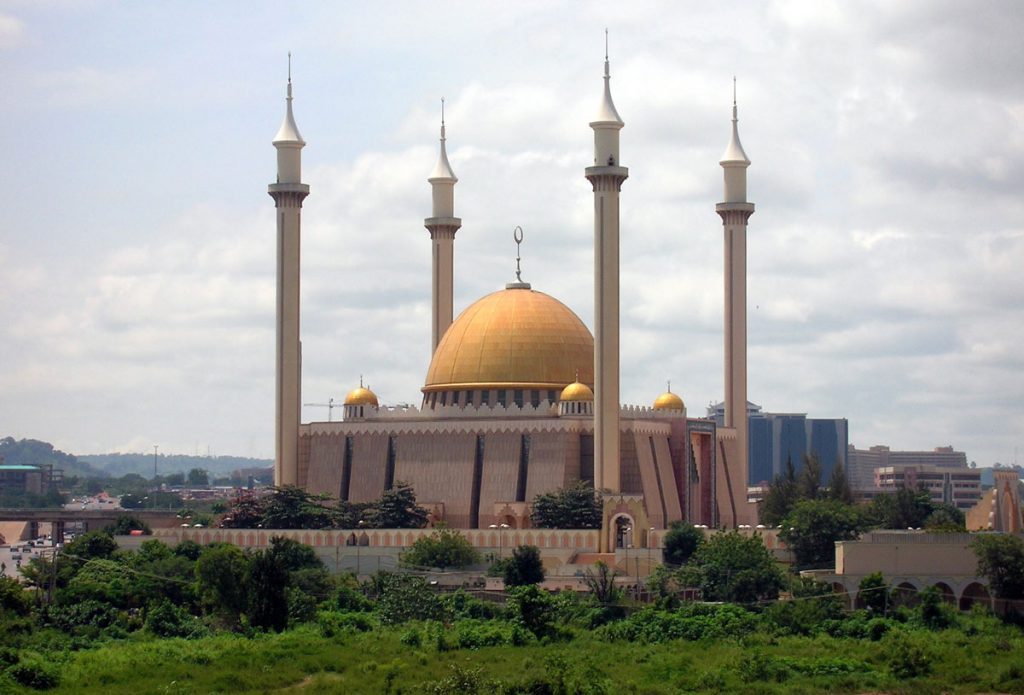
The national mosque of Nigeria is the Abuja National Mosque, commonly referred to as the Nigerian National Mosque. The mosque was constructed in 1984 and is accessible to non-Muslims, excluding when prayers are being said.
10. Bureh Beach, Sierra Leone
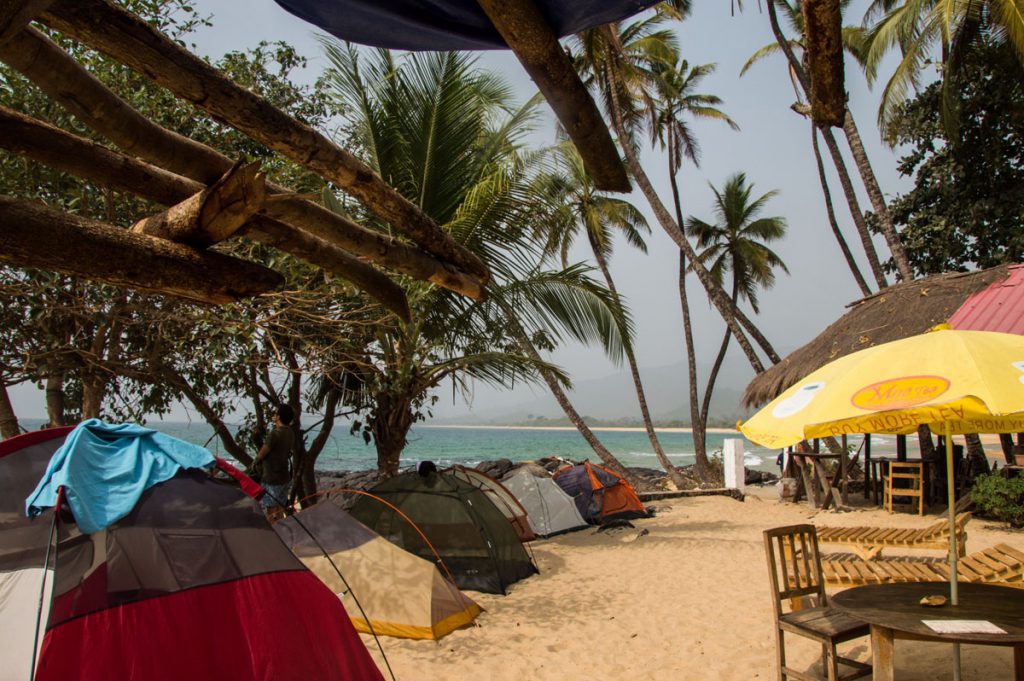
Bureh Beach is one of Sierra Leone’s most stunning beaches.
Southern Africa
1. Bo-Kaap, South Africa

Bo-Kaap, located in the heart of Cape Town, South Africa, is a vibrant and colorful neighborhood that is rich in history and culture.
This area is home to a unique blend of Cape Malay, Dutch, and British influences. Known for its colorful buildings, rich history, and delicious cuisine, Bo-Kaap is a must-visit destination for anyone traveling to Cape Town
10 Reasons Why Bo-Kaap Should Be on Your South African Bucket List
2. Victoria Falls, Zambia, and Zimbabwe
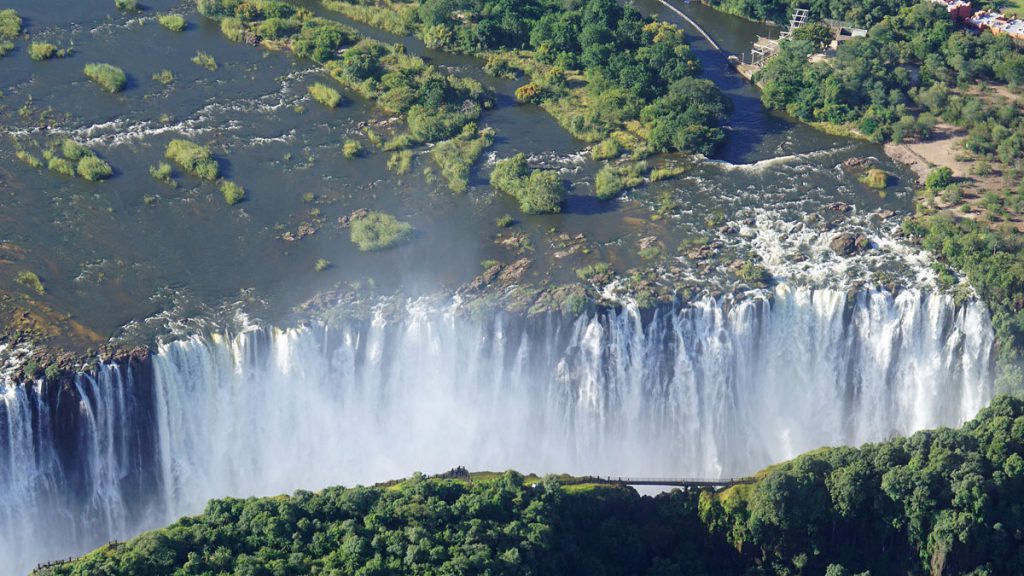
Victoria Falls is the largest waterfall in the world and is located on the border between Zambia and Zimbabwe. It is home to a wide range of exotic plants and animal species.
3. Blyde River Canyon, South Africa
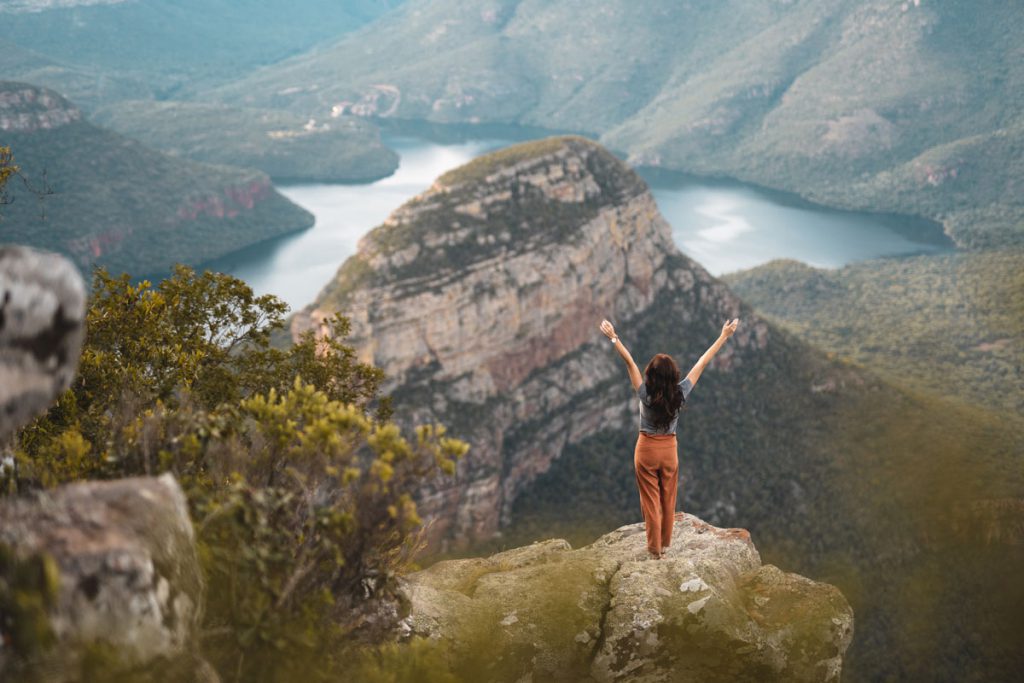
The Blyde River Canyon is a 26 km (16 miles) long canyon in Mpumalanga, South Africa. Although it is one of the most breathtaking canyons in the world, it is much smaller than canyons in Asia, the Grand Canyon, and the Fish River Canyon.
4. Sossusvlei, Namibia
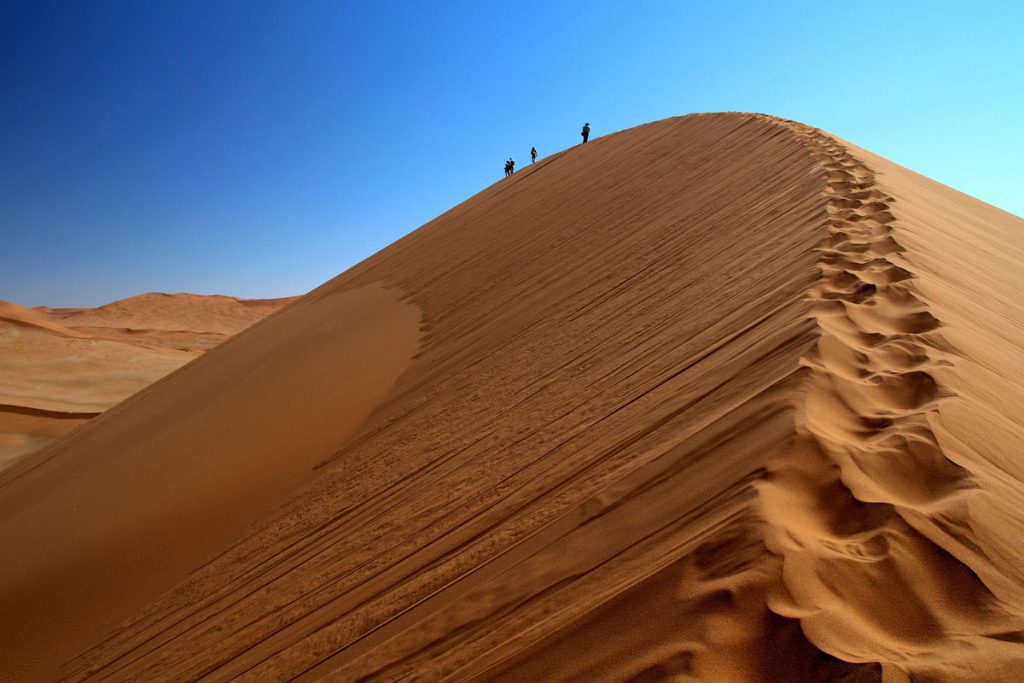
Sossusvlei is a salt and clay pan surrounded by tall red sand dunes in Namibia’s Namib-Naukluft National Park.
5. Okavango Delta, Botswana
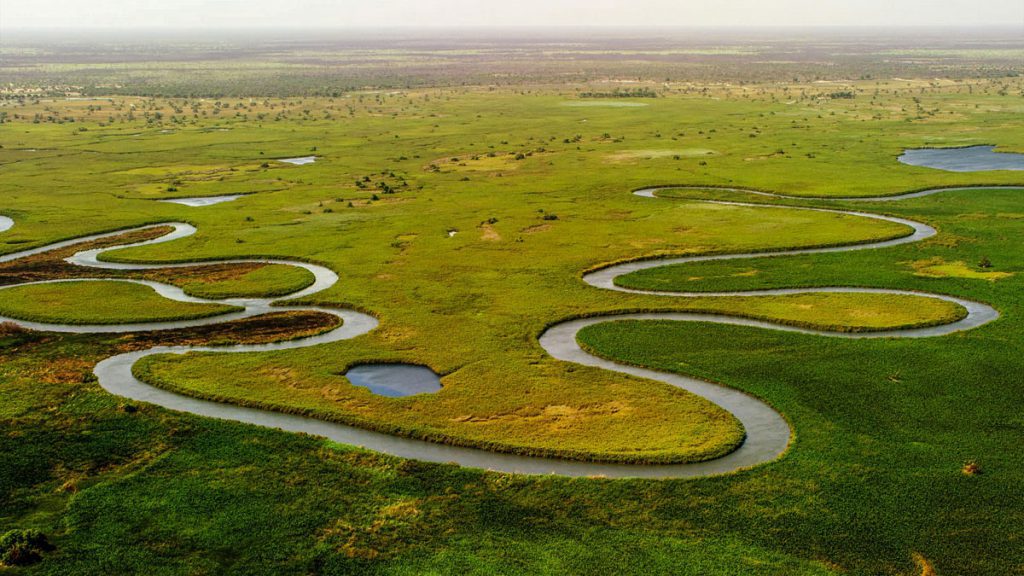
The Okavango Delta is a huge inland river delta in northern Botswana. It is well known for having large grassland expanses that periodically flood, fostering a flourishing wildlife habitat.
6. Namaqualand, South Africa
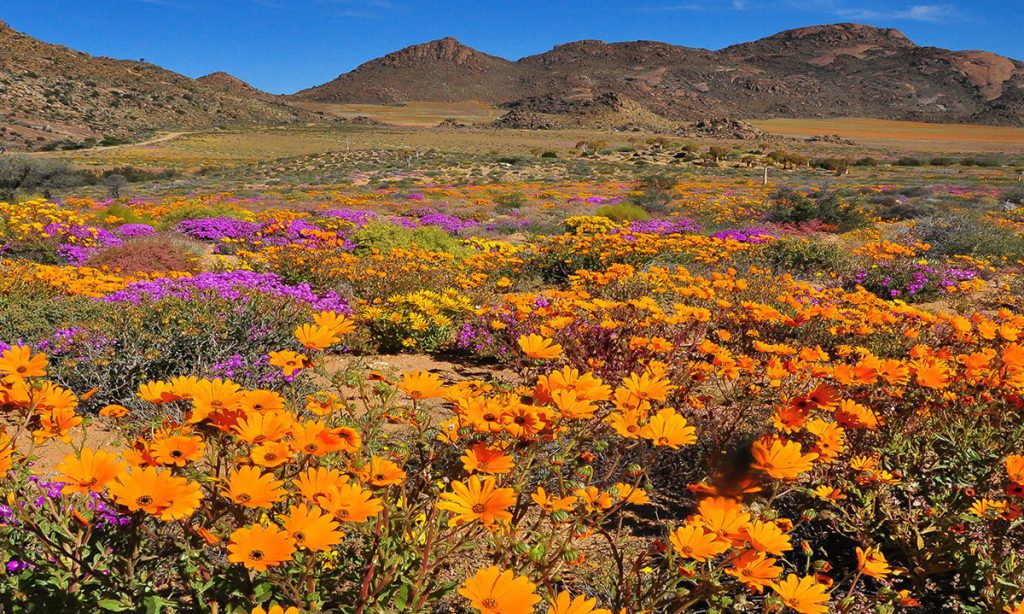
Namaqua National Park is located in the Northern Cape Province, not far from South Africa’s border with Namibia.
7. Tundavala Gap, Angola
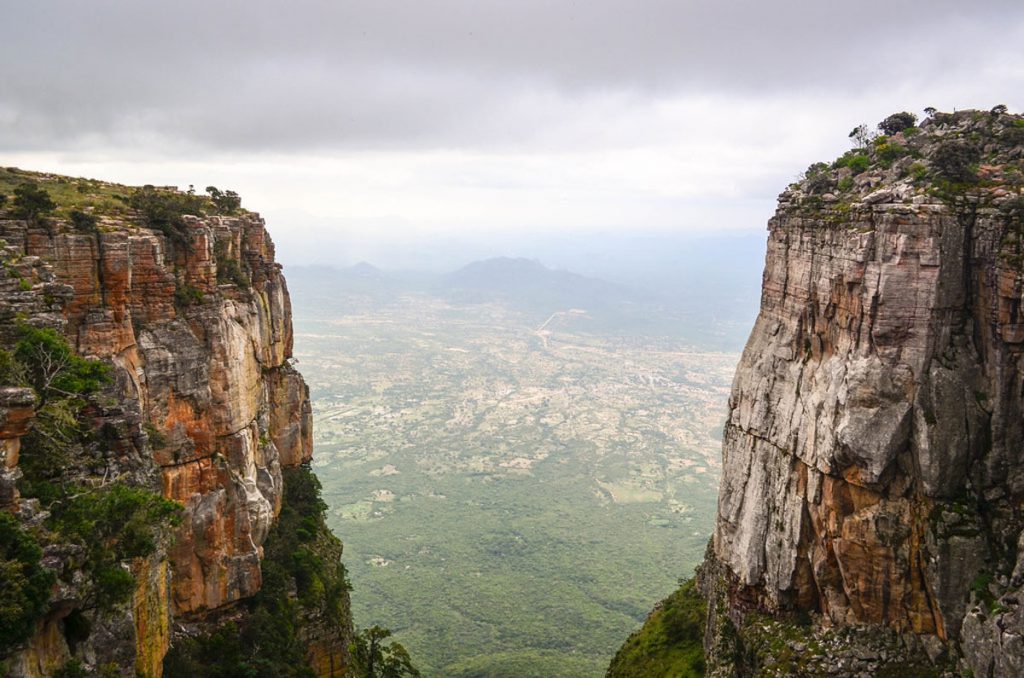
Tundavala Gap is a 2,200-meter-high lookout point on the edge of an enormous cliff called Serra da Leba in Angola. At the summit, you’ll get a breathtaking view of most of Angola.
8. Makgadikgadi Pans National Park, Botswana
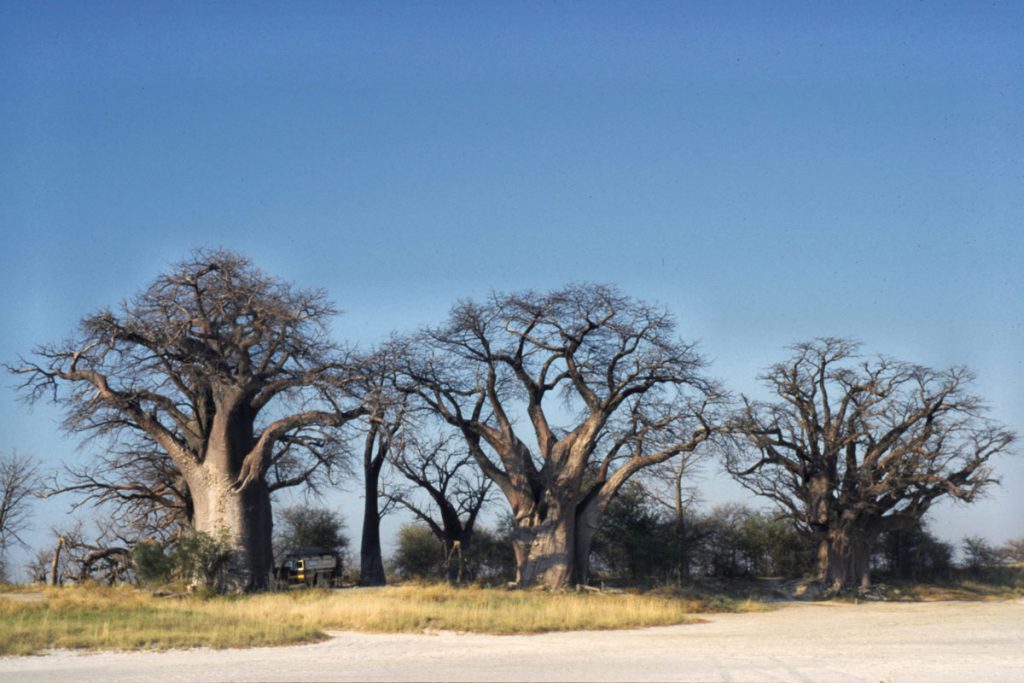
Makgadikgadi Panis one of the largest salt flats in the world. It is a salt flat located in the center of a dry savanna in northeastern Botswana. The pit is all that’s left of the formerly gigantic Lake Makgadikgadi, which dried up tens of thousands of years ago after covering an area greater than Switzerland.
9. Table Mountain, South Africa
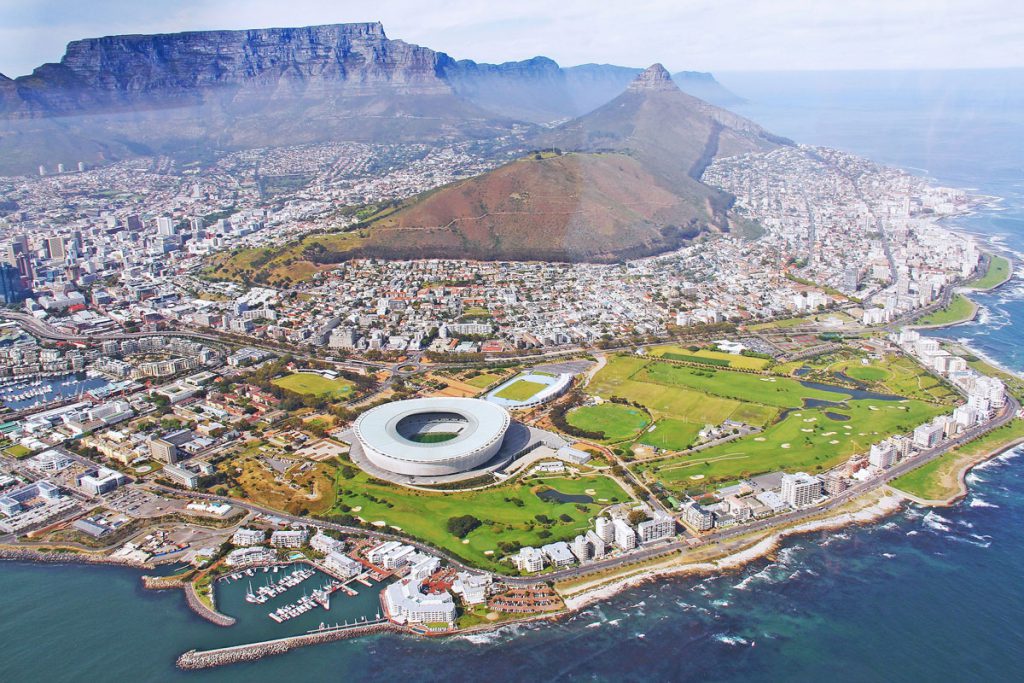
In South Africa, Table Peak is a mountain with a flat top that serves as a notable landmark overlooking the city of Cape Town. Many visitors take the cable car or hike to the top, making it a popular tourist destination.
10. Lake Malawi, Malawi

Lake Malawi is an African Great Lake in the southernmost lake in the East African Rift System and is situated between Malawi, Mozambique, and Tanzania. It is also known as Lake Nyasa in Tanzania and Lago Niassa in Mozambique.
11. Maletsunyane Falls, Lesotho
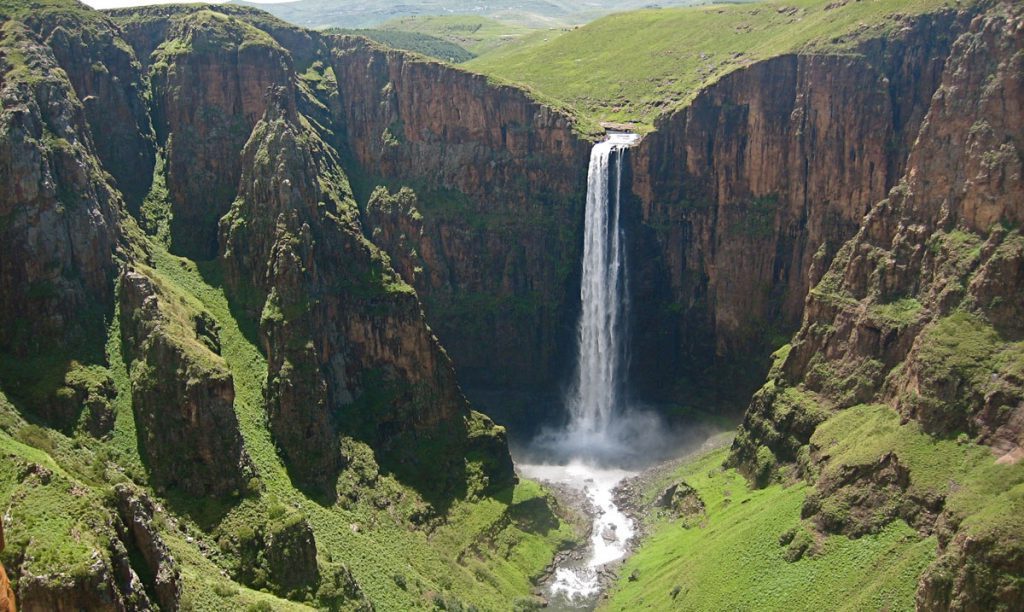
A 192-meter-high waterfall called Maletsunyane Falls is located in Lesotho, an African nation. The town of Semonkong, which is also called after the falls, is close by where it is situated.
12. Franschhoek, South Africa
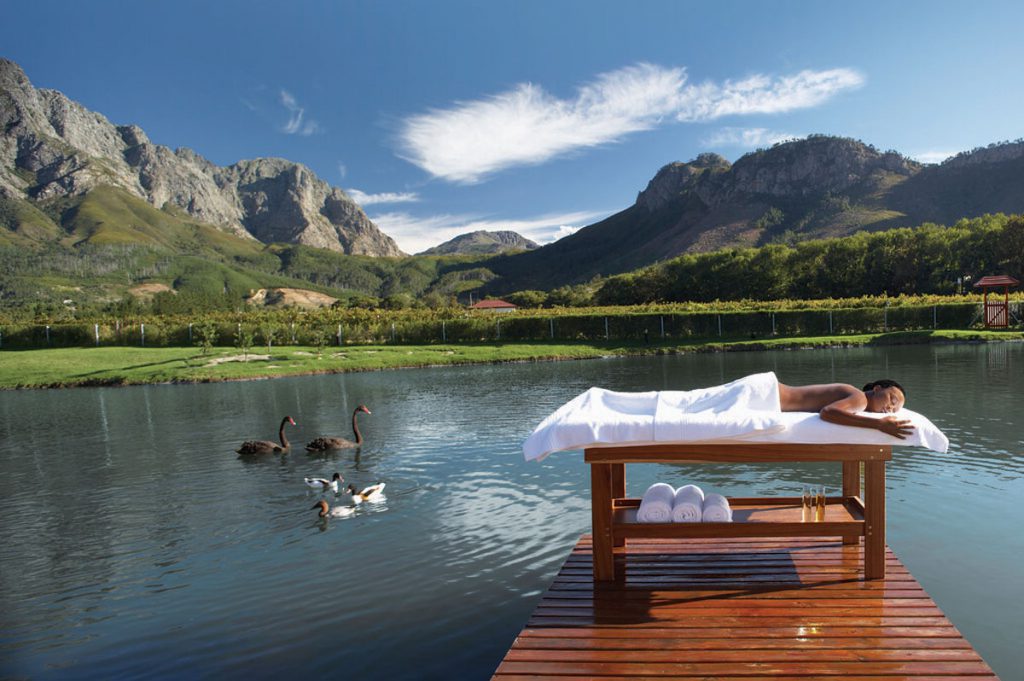
The town of Franschhoek is located in South Africa’s Western Cape and features Cape Dutch-style buildings and centuries-old vineyards.
13. Bazaruto Archipelago, Mozambique

Off the coast of southern Mozambique, there are six islands that make up the Bazaruto Archipelago. They are renowned for their white sand beaches and are located within Bazaruto National Park.
14. Johannesburg, South Africa
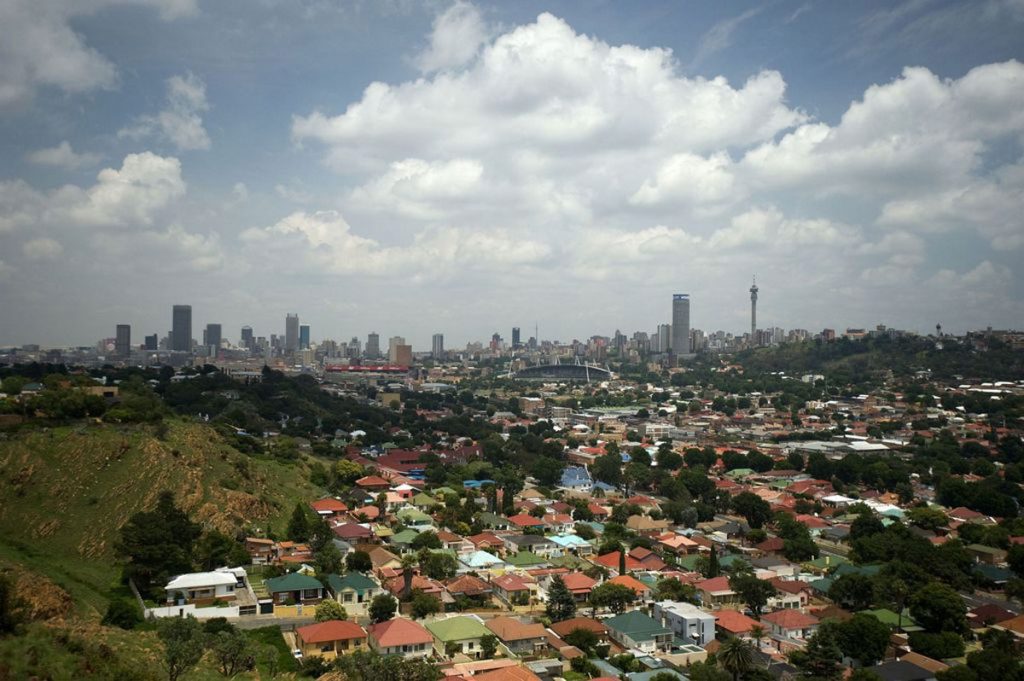
The largest city in South Africa and the provincial capital of Gauteng, Johannesburg, had its beginnings as a gold-mining community in the 19th century. Nelson Mandela and Desmond Tutu previously lived in the vast Soweto township.
15. Skeleton Coast, Namibia
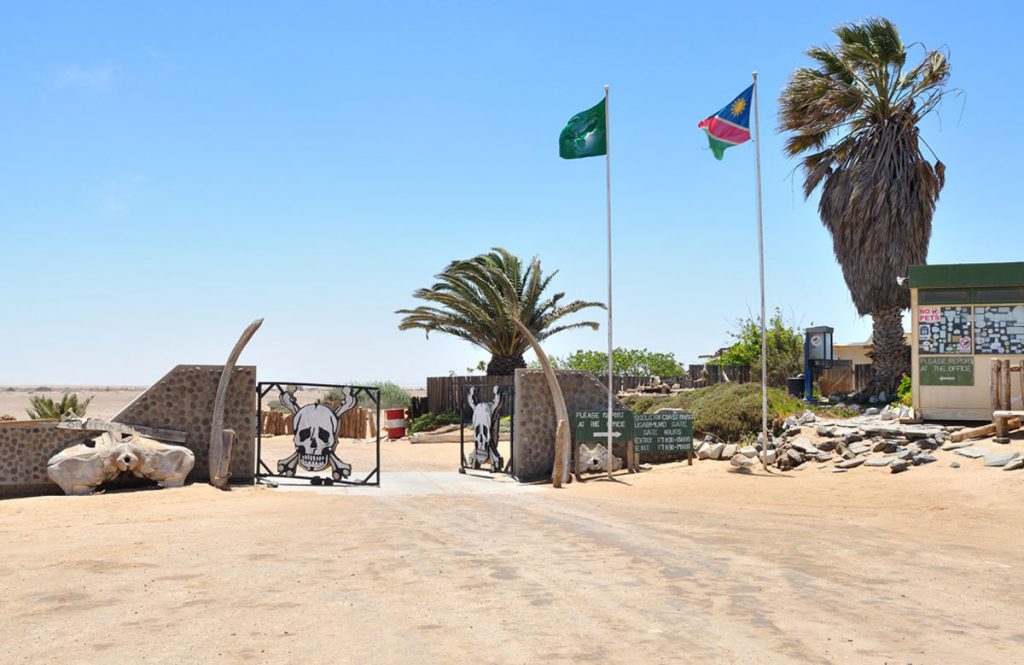
Although the word is occasionally used to refer to the entire Namib Desert coast, the Skeleton Coast is the northern portion of Namibia’s Atlantic coast and is located south of Angola from the Kunene River to the Swakop River.

